You wonder when is the best time to visit Kyoto. Valid question, as deciding when to visit Kyoto can make or break your trip. Whether you’re hoping to catch the cherry blossoms in full bloom or the vivid hues of autumn foliage, timing is everything.
Each period of the year brings a different flavour to the city, influencing not just the scenery, but the local culture and events, and yes, even food. How do I know? I used to live in Japan and I recently just came back from another two-month trip there! And before you ask, autumn is my favourite time to visit Kyoto and, in my humble opinion, the best time to visit because there are fewer crowds, better prices and the perfect weather.
But, if you are after warmer weather, sakura blossoms or want to cosy up in a traditional ryokan surrounded by snow, then you will want to pick your season differently.
In the spring months of March, April, and May, Kyoto shakes off its winter slumber to blossom, quite literally. This is prime time for hanami or cherry blossom viewing, and the city bursts into shades of delicate pink. Yet, be warned, you’ll share this spectacle with many others, making this period the busiest time for tourism. We’re talking packed streets, here.
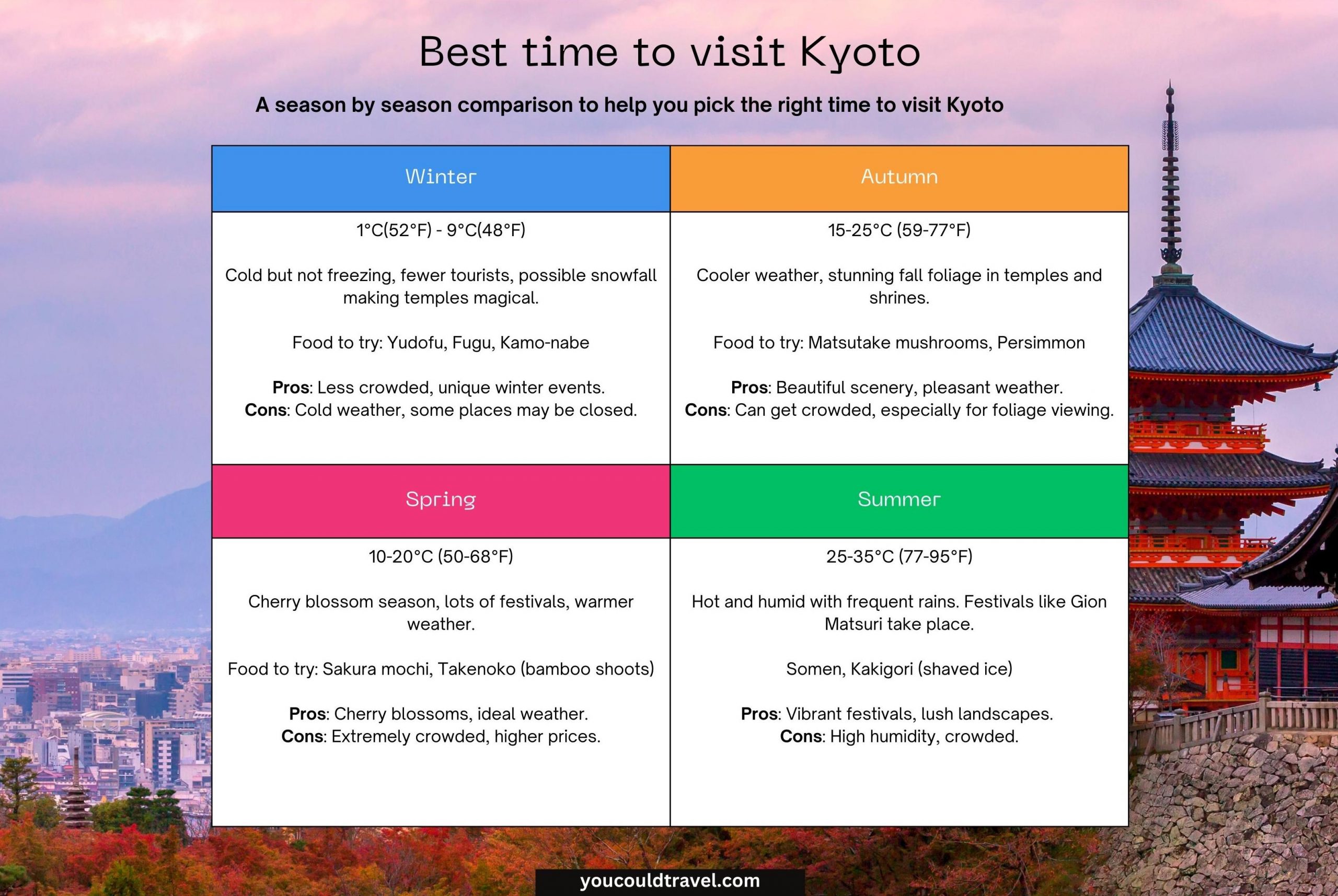
October and November present the city in its most photogenic guise as fall foliage dominates the landscape. Temperatures are mild, and the autumn festivals are a less-crowded alternative to spring’s bustling events. Now don’t get me wrong, Kyoto is always busy, but this sure is a beautiful time to visit.
Summer (June through August) throws a different challenge. The humid weather peaks, and the start of the rainy season means intermittent showers. However, this is also when Kyoto is at its most spiritually active, with a slew of festivals and events taking over the city. But be aware, as typhoons are always in the cards.
Contrary to popular belief, winter (December through February) in Kyoto is not the season to avoid, but to savour. The city is far less crowded, and a dusting of snow on iconic temples like Kinkaku-ji makes for unforgettable sights. And in my opinion, winter is a far better choice to visit than summer.
So, before you book that ticket or reserve a ryokan stay, dig into our comprehensive guide on when to go to Kyoto.
Table of Contents
- When To Go To Kyoto
- Visiting Kyoto in January
- Kyoto weather in January
- Kyoto events in January
- Cuisine highlights
- What to Wear in January
- Why visit in January
- Visiting Kyoto in February
- Kyoto Weather in February
- Kyoto Events in February
- Cuisine Highlights
- What to Wear in February
- Why Visit in February
- Visiting Kyoto in March
- Kyoto weather in March
- Kyoto events in March
- Cuisine highlights
- What to Wear in March
- Why visit in March
- Visiting Kyoto in April
- Kyoto Weather in April
- Kyoto Events in April
- Cuisine Highlights
- What to Wear in April
- Why Visit in April
- Visiting Kyoto in May
- Kyoto Weather in May
- Kyoto Events in May
- Cuisine Highlights
- What to Wear in May
- Why Visit in May
- Visiting Kyoto in June
- Kyoto Weather in June
- Kyoto Events in June
- Cuisine Highlights
- What to Wear in June
- Why Visit in June
- Visiting Kyoto in July
- Kyoto Weather in July
- Kyoto Events in July
- Cuisine Highlights
- What to Wear in July
- Why Visit in July
- Visiting Kyoto in August
- Kyoto Weather in August
- Kyoto Events in August
- Cuisine Highlights
- What to Wear in August
- Why Visit in August
- Visiting Kyoto in September
- Kyoto Weather in September
- Kyoto Events in September
- Cuisine Highlights
- What to Wear in September
- Why Visit in September
- Visiting Kyoto in October
- Kyoto Weather in October
- Kyoto Events in October
- Cuisine Highlights
- What to Wear in October
- Why Visit in October
- Visiting Kyoto in November
- Kyoto Weather in November
- Kyoto Events in November
- Cuisine Highlights
- What to Wear in November
- Why Visit in November
- Visiting Kyoto in December
- Kyoto Weather in December
- Kyoto Events in December
- Cuisine Highlights
- What to Wear in December
- Why Visit in December
- Final Thoughts
- Tips for first time Kyoto visitors
- Useful resources for first timers
- Frequently Asked Questions
When To Go To Kyoto
| Season | Average Temperatures | What to expect |
| Winter | 1°C(52°F) – 9°C(48°F) | Cold weather, fewer tourist, cheaper prices, lots of beautiful lights |
| Spring | 4°C(39°F) – 20°C(68°F) | Pleasant weather, stunning cherry blossoms, crowds, highest prices |
| Summer | 29°C(84°F) – 30°C(86°F) | Hot weather, high humidity, some crowds, potential typhoons |
| Fall | 7°C(44.6°F) – 29°(84°F) | Pleasant weather, stunning foliage display, decent prices |
The best times to visit Kyoto are October/November (Autumn) and April (Spring). October and November come with very pleasant weather and the leaves start to turn into a beautiful foliage display. It’s called koyo, and it’s just as beautiful as witnessing sakura blossoms.
April is the usual month when you can get the full sakura blossoms display in Kyoto. It tends to change every year, but the beginning of April is usually a good time to visit. If you plan to visit during the cherry blossom festival, you should always book everything well in advance. At the beginning of April you will still need a jacket and an umbrella as the weather can still be a bit cold and fickle. I recommend layering. During Spring in Kyoto, I normally wear a thermal, a shirt, a wool sweater and a trench coat. This way I can easily remove layers as it warms up during the day and add them back on for the evening.
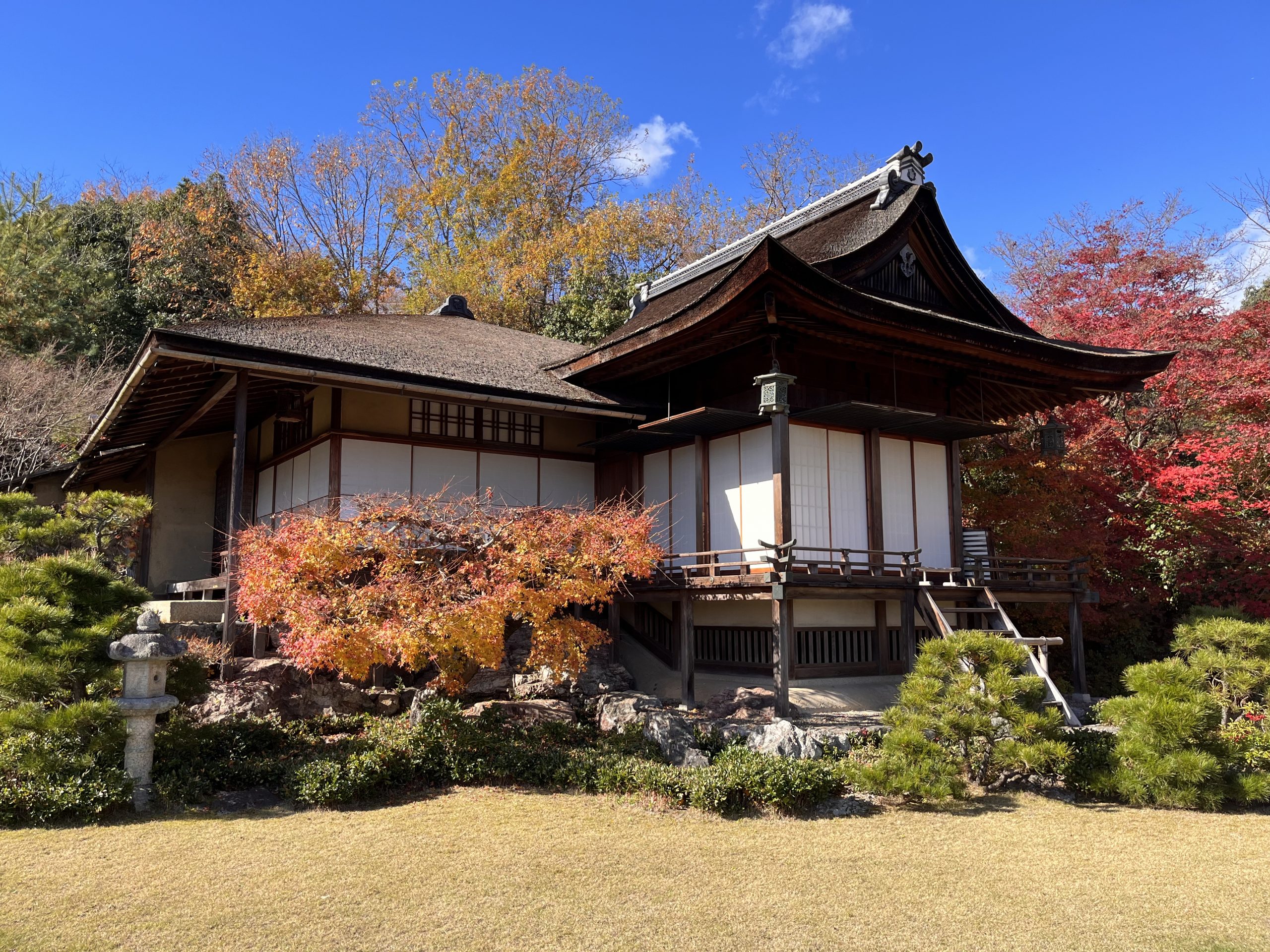
Kyoto is a year round destination, and every season has its perks. Summer is hot and humid, but it’s also the time for festivals (matsuri). It’s a great time for hikes in the mountains, as the weather is typically cooler there. Summer is also the rainy season, so you will need an umbrella handy. Don’t worry though, it won’t rain every day, and you can still enjoy your visit.
Autumn is my favourite season in Kyoto. It’s simply stunning with the perfect weather. It’s not too hot and not too cold. You can easily wear a T-shirt and a light jacket during the day, which makes it so nice for exploring. The colours are exquisite, perfect for photos. Prices are not as high as during the sakura season, but it is a popular time to visit, so it’s fair to expect some crowds. The temples in Kyoto look especially stunning with the foliage backdrop.
Winter in Kyoto is cold and there is snow in the mountains. The prices are much cheaper than the rest of the year and there are generally fewer crowds. The air is crisp and you will need a warm winter jacket, boots, scarf, and gloves. Last time I visited in the winter, I also required a warm woolly hat.
Now that you know the summary, let me dive deep into each Kyoto season, so you know what temperatures to expect, how to dress and what’s going on to make sure you pick the right time to visit.
Visiting Kyoto in January
Kyoto in January is cold but not freezing, with temperatures between 1-9°C (34-48°F). The city is quiet, with fewer tourists. You might even catch a bit of snow, giving the temples and gardens a magical touch.
Accommodation can be moderate in cost, but smart planning and early bookings can secure you some excellent deals.
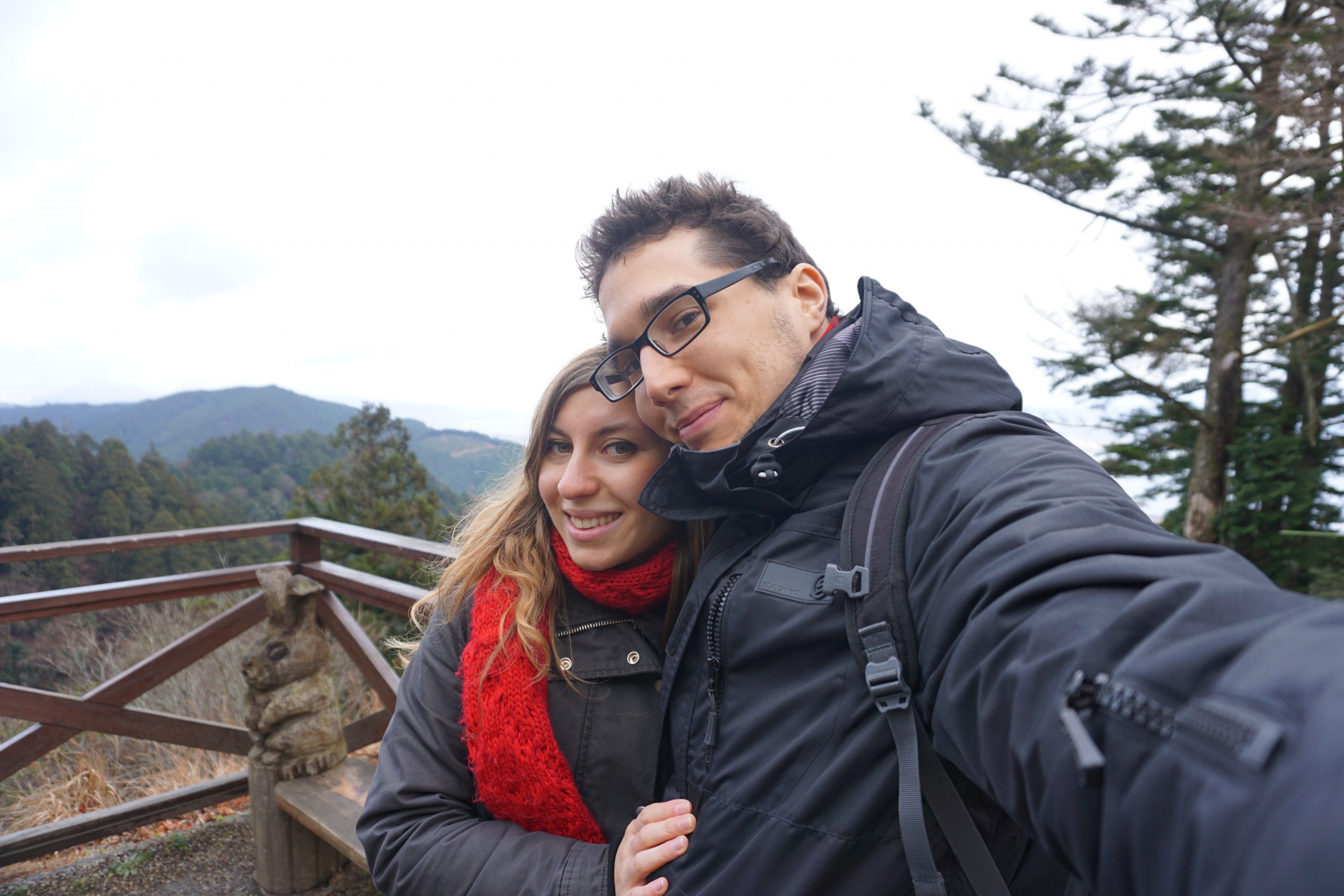
Kyoto weather in January
Expect crisp air and clear skies. If you’re lucky, you’ll see the city’s beautiful temples dusted with snow. But don’t worry about snowstorms, they’re pretty rare. Just pack layers—think thermal shirts, a cosy sweater, and a good winter jacket. From experience, I recommend merino thermals and wool sweaters as they really make a difference. You can easily get good quality garments from Uniqlo, without breaking the bank. Don’t forget boots with good grip and thick warm socks.
Kyoto events in January
First Shrine Visit of the Year – In the first three days of January, everyone heads to shrines for the year’s first prayers. This is a big deal and feels special. Top spots include Heian-jingu Shrine, Fushimi-Inari-taisha Shrine, and Yasaka-jinja Shrine.
Hadaka Odori (Naked Dance) – January 14th brings a cool festival dating back to Edo Period. Ok, don’t worry, people are not actually nacked but the dance and festival is about praying for an abudance of harvest.
Archery Contest at Sanjusangen-do – On January 15th, a wonderful archery contest happens at the Sanjusangen-do Temple. It’s not just about hitting the target; it’s a celebration of coming of age. It’s like nothing you’ve seen before and well worth checking out.
Cuisine highlights
In terms of cuisine, January is a fantastic time to indulge in Kyoto’s winter offerings like Yudofu, a tofu hot pot, and Fugu, the famous pufferfish delicacy. Local eateries also serve seasonal seafood like Kue (longtooth grouper) and warming dishes like Kamo-nabe, a duck hot pot that’s a local favourite.
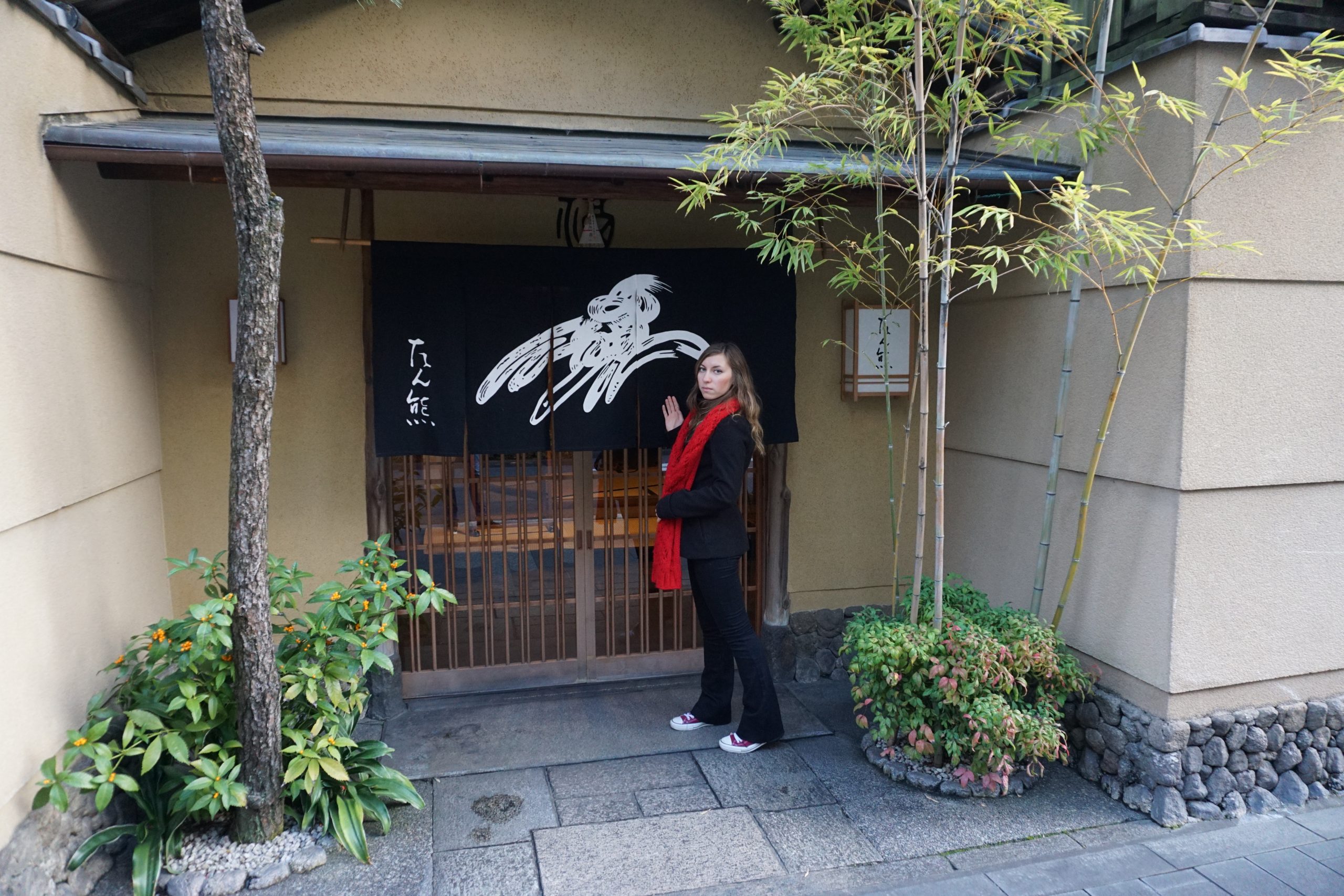
What to Wear in January
Seriously, dress warm. Layer up with thermals and sweaters. Top it all off with a water-resistant jacket. Your shoes should be sturdy and offer good grip. You will definitely need gloves, a scarf and a hat. Make sure to wear thermals under your trousers too. And here’s my top tip for winter: purchase heat paches from any konbini shop or chemist. It’s going to make all the difference!
Why visit in January
Kyoto in January is for you if you’re looking to dodge the crowds and experience the city in a more low-key way. You’ll also get to see unique events and traditions that most visitors miss out on. And hey, if you’re into photography, imagine the stunning pics you could get with a backdrop of snow. It’s a different, quieter Kyoto, but still every bit as awesome.
Visiting Kyoto in February
February in Kyoto sees the tail-end of winter, with temperatures typically ranging between 1-11°C (33.8-51.8°F). The city starts to wake up from its winter sleep as preparations for spring begin, but it’s still relatively quiet in terms of tourism.
You can usually find decent deals on accommodation this month, although it’s always a good idea to book ahead to snag the best options.
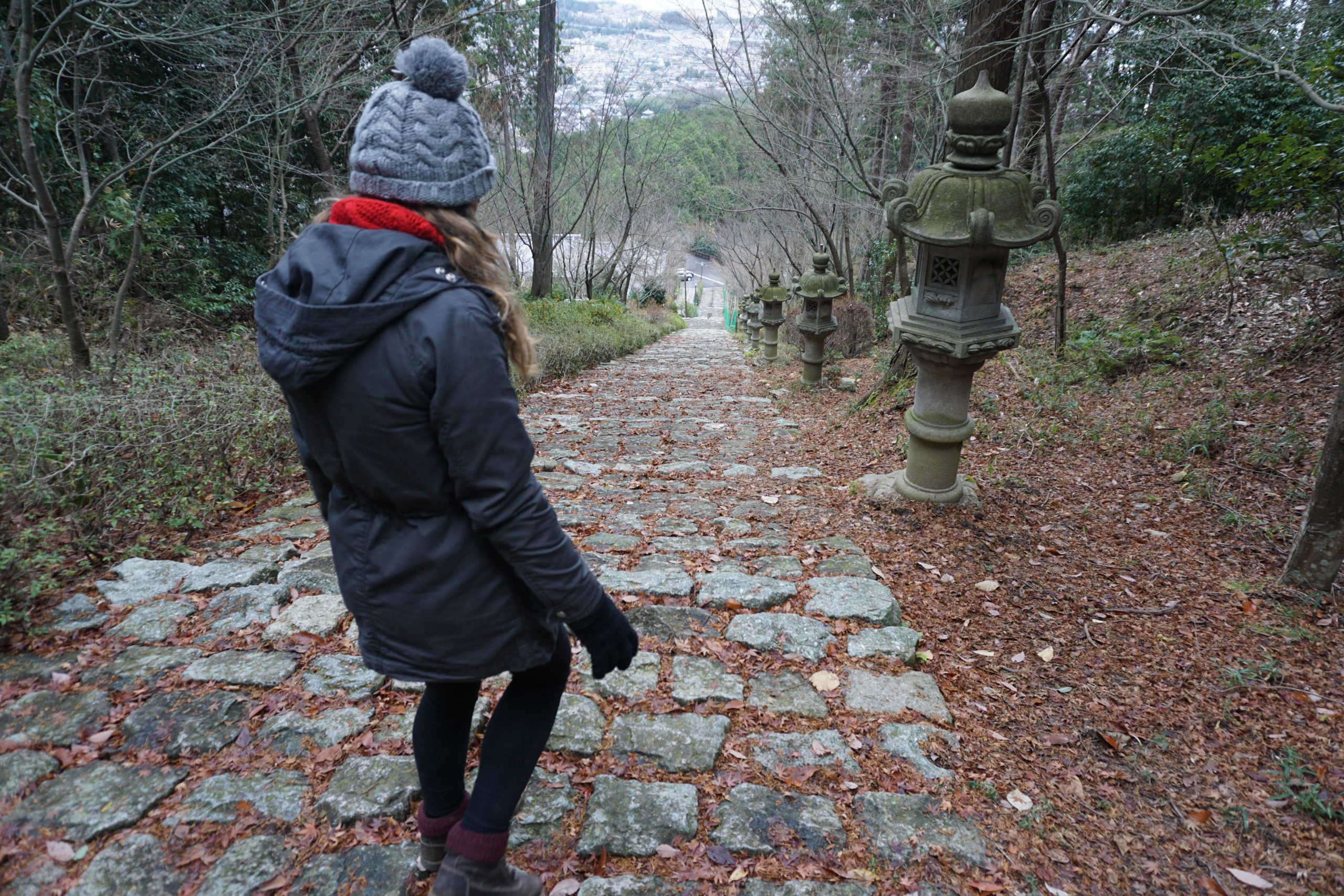
Kyoto Weather in February
While not as cold as January, February in Kyoto still has a wintery vibe. February in Kyoto is chilly, but also occasionally sunny, you can still expect that crisp winter air. Snow is uncommon, but not unheard of. Like January, layers are your best friends. Opt for thermal shirts, a comfy sweater, and a solid winter jacket. Footwear with good grip is also key as some temple paths may be icy.
Kyoto Events in February
February in Kyoto is relatively quiet but perfect to celebrate love as it’s Valentine’s Day!
Setsubun Festival – Held on February 3rd at shrines and temples throughout the city, this festival marks the beginning of spring according to the lunar calendar. People throw roasted soybeans to drive away evil spirits and welcome good fortune.
Baikasai Plum Blossom Festival – Mid-February brings the Baikasai Plum Blossom Festival at Kitano Tenmangu Shrine. Here you can witness a traditional tea ceremony held under blossoming plum trees, a sign that spring is nearing.
Valentine’s Day – Though not a traditional Japanese holiday, it’s getting more popular. If you’re travelling as a couple, you’ll find plenty of special events and menus aimed at lovebirds.
Cuisine Highlights
February is a good month to dive into Kyoto’s seafood options, as many winter fish are at their peak. Fugu, or pufferfish, is a winter speciality that you might want to try if you’re feeling adventurous. Other seafood like amberjack and oysters are also in season. For something warm and hearty, try yudofu, a tofu hot pot dish often enjoyed in winter.
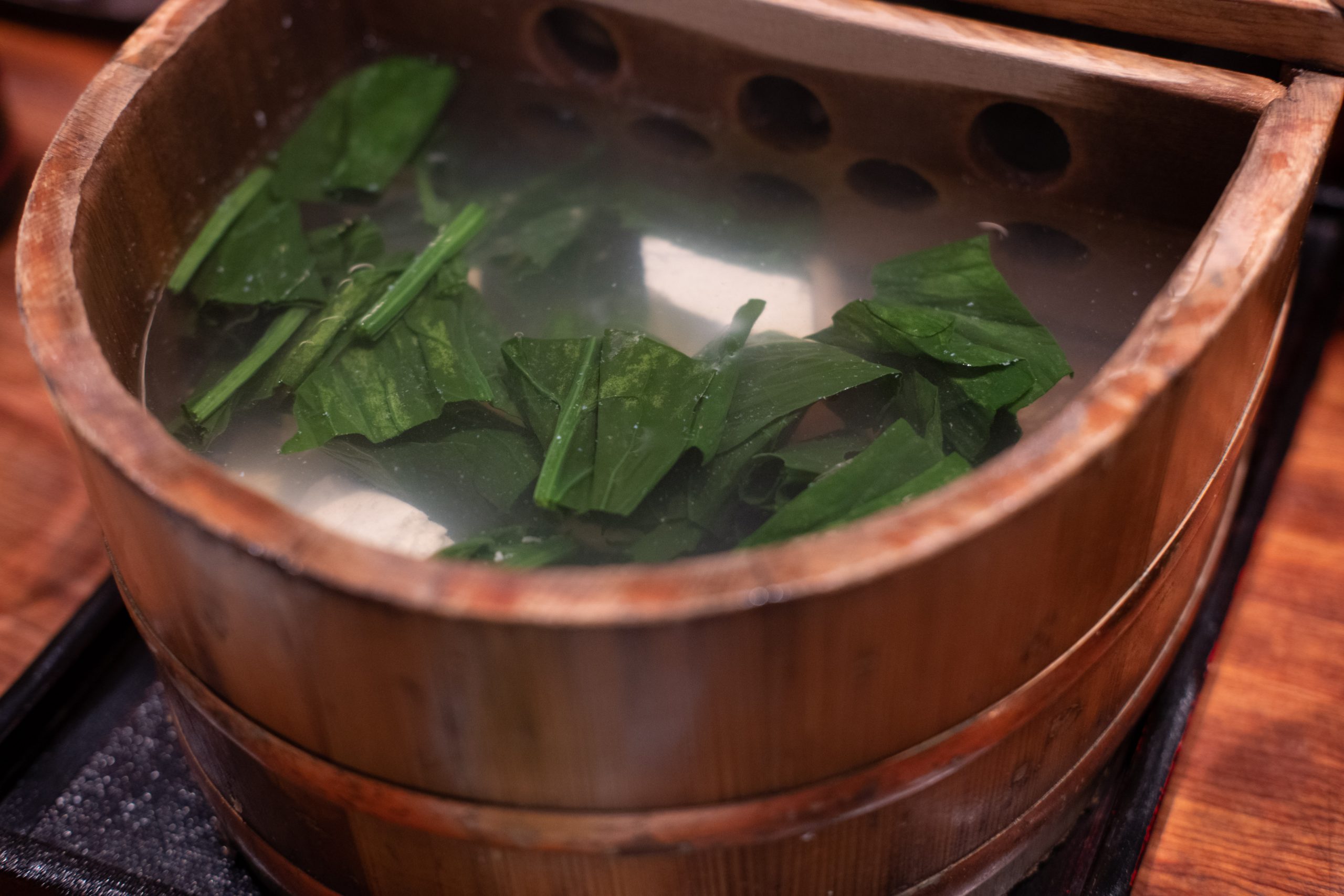
What to Wear in February
Still cold, so similar advice as January applies: thermal layers, cozy sweaters, and a robust winter jacket. For footwear, insulated boots or shoes with a good grip are essential. Wool socks can make a world of difference in comfort.
Why Visit in February
February offers a quieter visit experience, allowing you to soak in the culture without the crowds. It’s a great month for appreciating the winter scenery and the early signs of spring with the plum blossoms. Also, you’ll find that hotels are generally less expensive than peak season, so you can allocate more of your budget to experiencing all the things to do in Kyoto.
Visiting Kyoto in March
March is when Kyoto starts to shake off the winter chill and welcomes the early signs of spring. The temperatures typically range from 4-13°C (39.2-55.4°F). The city starts to get busier as the cherry blossom season approaches, so it’s a good idea to book your accommodation in advance. End of March is particularly popular.
Kyoto weather in March
March brings a mix of chilly and moderate weather. You’ll still want to bring some layers, but you can start to ease up on the heavy winter gear. Light thermal undershirts, a medium-weight sweater, and a transitional jacket should be sufficient. A pair of comfortable walking shoes is a must, especially as you’ll likely be doing more outdoor exploring in the milder weather.
Don’t pack too light though, trust me, evenings in March can be seriously cold, especially if you plan on taking day trips to the nearby Mount Hiei or Yoshino.
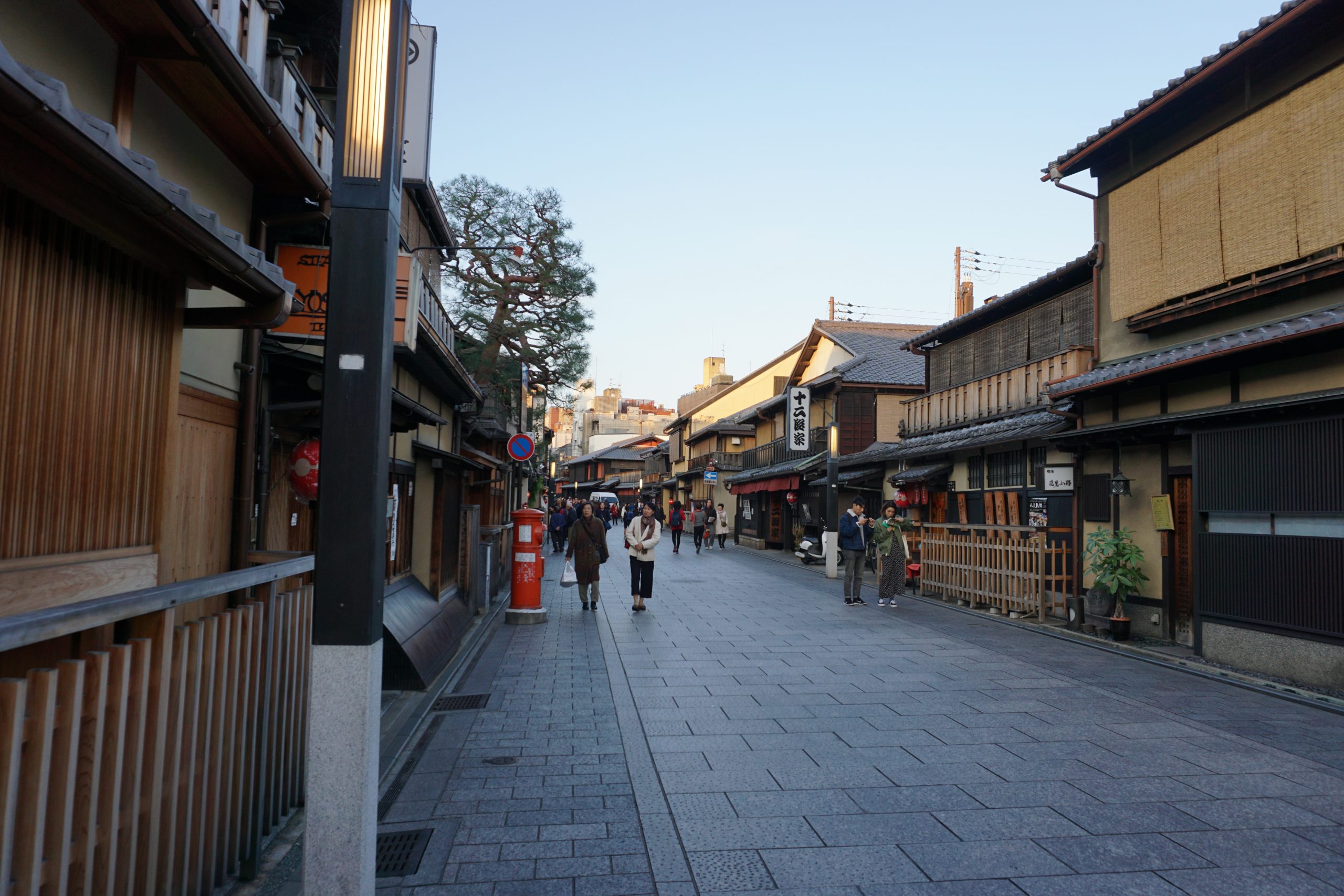
Kyoto events in March
Kitano Odori Festival – If you’re fascinated by the world of geisha, don’t miss the Kitano Odori Festival. It’s one of the five major dance events organized by Kyoto’s geisha communities each year. This is your opportunity to witness the captivating performances of Kamishichiken’s skilled geiko and maiko as they showcase their elegant dance moves and melodious songs.
Plum Blossom Season – While cherry blossoms get most of the limelight in Japan, those in the know appreciate the country’s other floral wonders—like the plum blossoms. From February 1st to March 20th, you can revel in the beauty of these less-heralded yet stunning blooms that also mark the advent of spring across Japan.
Hanezu Odori Festival – Mark your calendar for the fourth Sunday of March to experience the Hanezu Odori Festival at Zuishin-in Temple. This event is more than just a dance, it’s a vibrant celebration of the upcoming spring season. The festival is performed to honour Ono no Komachi, a legendary poet and beauty. So if you’re into culture, poetry, or just the joyous vibes of spring, this is a must-see.
Cuisine highlights
In March, Kyoto’s culinary focus begins to shift towards spring fare. Be sure to try Sakura Mochi, a sweet rice cake filled with red bean paste and wrapped in a cherry blossom leaf. Also look out for seasonal vegetables like Bamboo Shoots and Sansai, or wild mountain vegetables, which start to appear on menus.
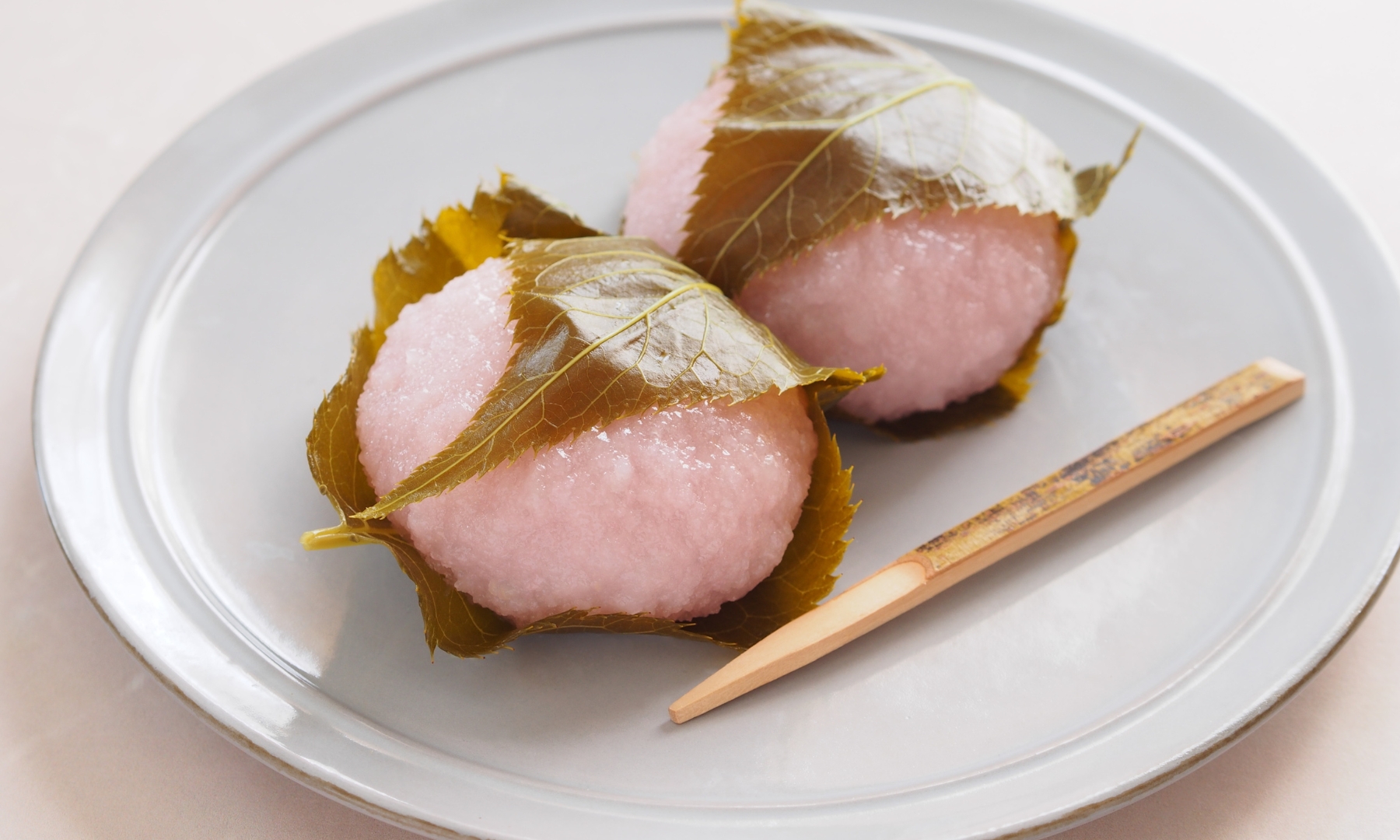
What to Wear in March
Pack layers that you can add or remove as the temperature fluctuates throughout the day. A medium-weight jacket should suffice, and maybe keep a scarf on hand for the colder evenings. You’ll also want a good pair of walking shoes, since the more pleasant weather invites longer walks through the city. Waterproofs are still essential.
Why visit in March
If you’re eager to witness the transition from winter to spring, March is an excellent time to visit Kyoto. You’ll avoid the full crush of the cherry blossom crowds while still enjoying a lot of what makes Kyoto special: the food, the culture, and the burgeoning signs of spring. It’s a time when the city starts to come alive again, making it a unique and rewarding period for a visit.
Visiting Kyoto in April
April is the heart of cherry blossom season in Kyoto. Expect temperatures ranging from 10-20°C (50-68°F), and a city that’s buzzing with both local and international tourists. Accommodations will be at a premium, so book your stay as early as possible to secure a good deal and location.
Kyoto Weather in April
April is comfortably mild, but can be somewhat unpredictable—expect anything from sunny days to light rain showers. A light sweater, a rain-resistant jacket, and some casual, comfortable footwear are musts. Since the weather is getting warmer, you can leave the heavy winter gear at home. On my last visit to Kyoto during the sakura season, I did need an umbrella often.
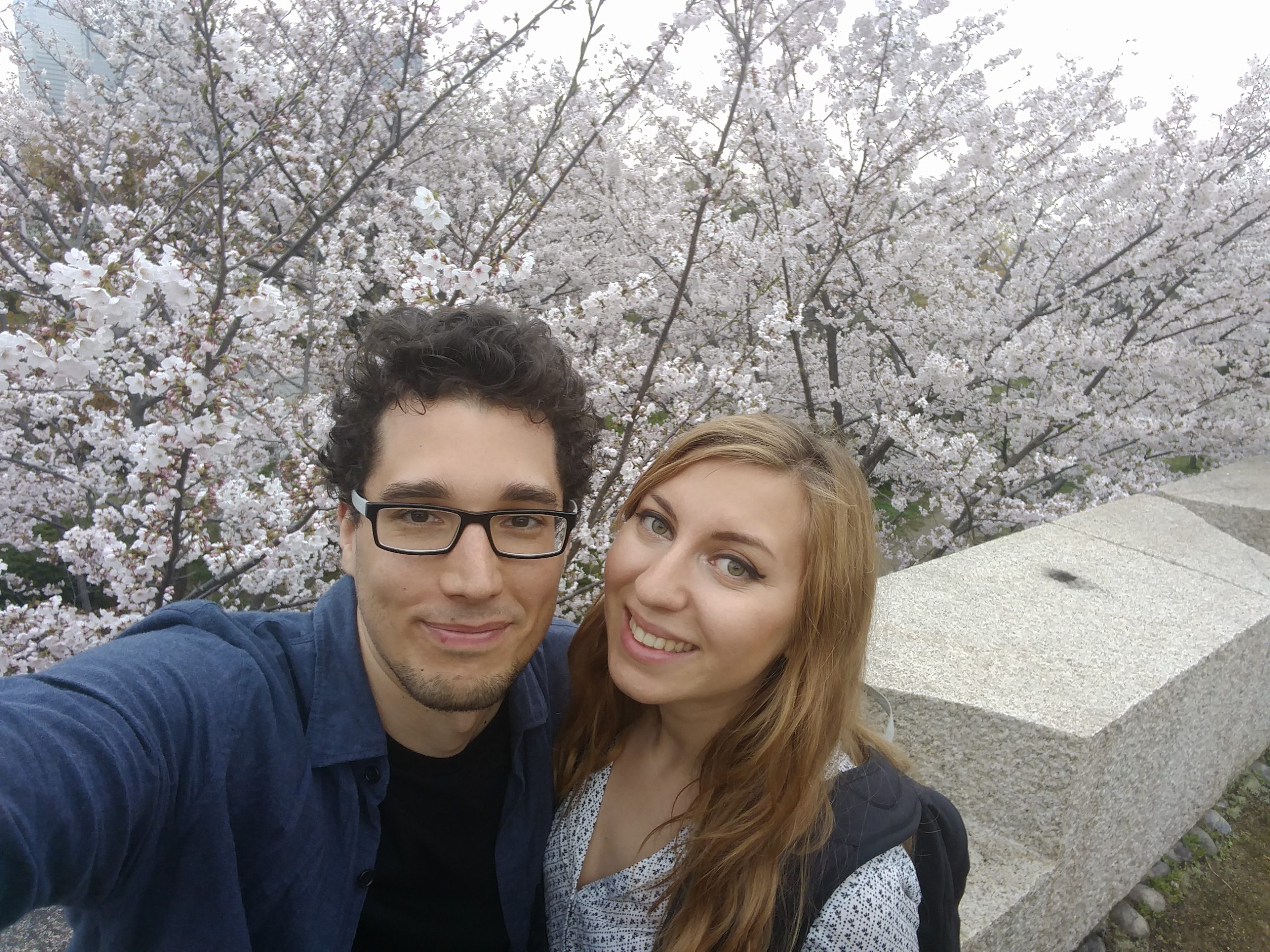
Kyoto Events in April
Cherry Blossom Viewing – Sakura, or cherry blossoms, are in full bloom in April. The Philosopher’s Path and Maruyama Park are top spots for experiencing this seasonal spectacle.
Miyako Odori – This traditional geisha dance performance happens throughout April. It’s a rare opportunity to experience Geisha culture up close.
Cuisine Highlights
April’s culinary scene celebrates spring with dishes like Sakura Ebi, tiny pink shrimp that are a seasonal treat. Takenoko, young bamboo shoots, also make their way onto menus, often served in a simple dashi broth to celebrate their freshness. Don’t forget to sip on some Sakurayu, a cherry blossom tea that’s as beautiful as it is delicious. I recently tried the Sakura Co boxes of treats that captured the cuisine highlights as well.
What to Wear in April
Dress in layers, as the mornings can be cool, but temperatures usually rise as the day goes on. A light scarf and a rain-resistant jacket are good ideas. Comfortable walking shoes are essential, as you’ll likely spend a lot of time outdoors enjoying the cherry blossoms and other scenic spots. I always recommend your favourite New Balance trainers, a pair of thermals underneath your wide trousers and a comfortable wool turtle-neck. That’s my go-to for the Spring.
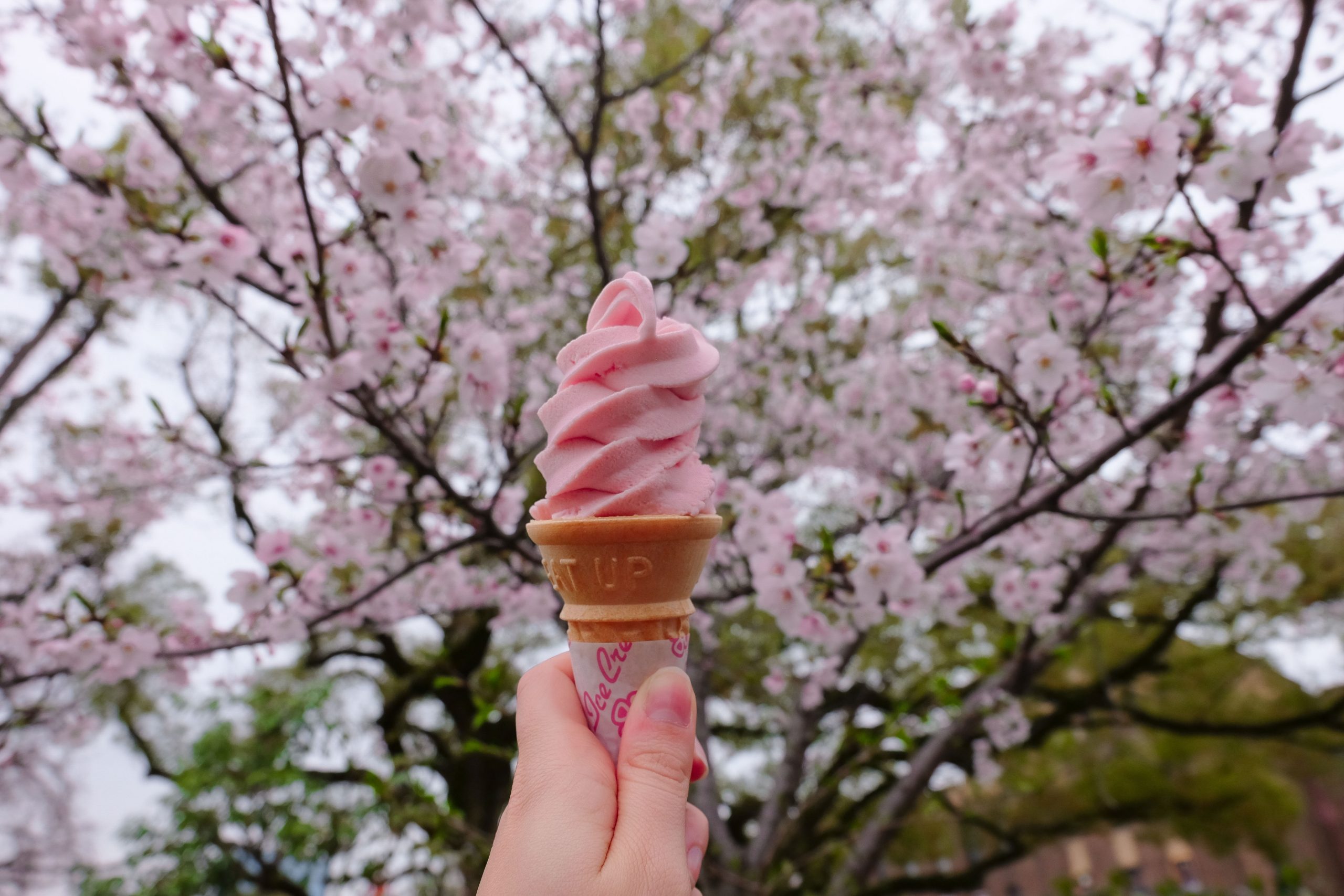
Why Visit in April
April is perfect if you want to experience Kyoto in all its blooming glory. Yes, the crowds are bigger, but the cherry blossoms and the buzz in the air make it worth the hustle. The city is picturesque, and the cultural events offer a deeper insight into Japanese traditions. It’s an ideal month for those looking to capture the essence of Kyoto, both visually and experientially. But do prepare yourself for many tourists and absolutely packed streets. It is all part of the experience. My extra recommendation is to dress up in a kimono for really memorable pictures.
Visiting Kyoto in May
May ushers in a warm, pleasant climate with temperatures ranging from 15-25°C (59-77°F). The cherry blossoms have fallen, but the gardens are lush and the temples serene. Tourist numbers drop compared to April, making May a wonderful time for those who enjoy a bit more solitude. Just remember that May is all about Golden Week, which is a good time for Japanese people to get time off work and celebrate.
Kyoto Weather in May
May is generally warm and sunny, but does bring its share of rain, especially as you move toward the end of the month. Think cotton shirts, comfortable shorts or skirts, and a light rain jacket just in case. Sunglasses and a hat will also come in handy.
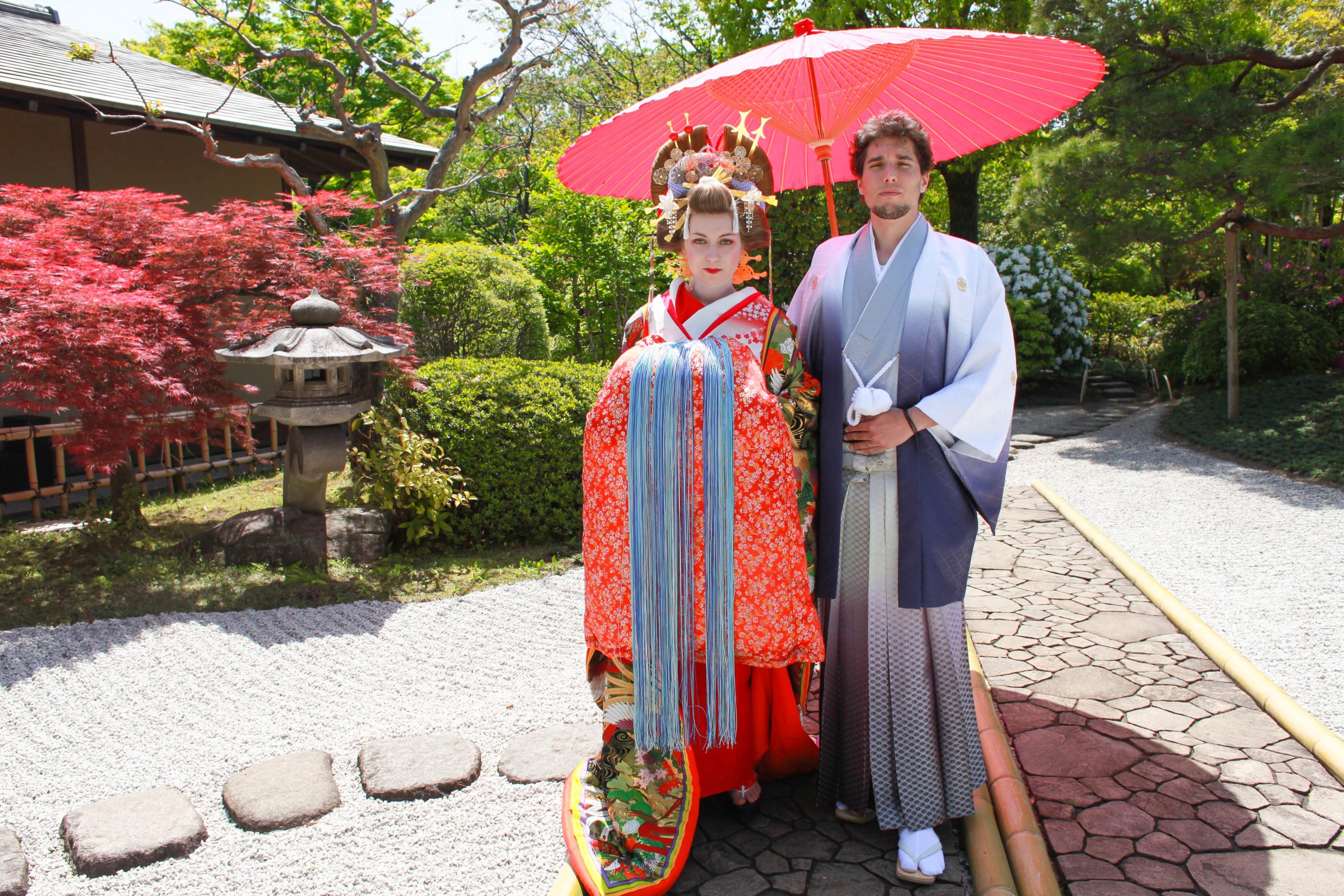
Kyoto Events in May
Golden Week – Golden Week or Ōgon Shūkan (黄金週間) is a week from 29 April to early May containing multiple Japanese holidays
Aoi Matsuri – One of Kyoto’s oldest festivals, the Aoi Matsuri, takes place on May 15. With participants dressed in Heian-era costumes and a grand procession that takes you back in time, it’s a must-see.
Kurama Fire Festival – This event involves lighting large torches and parading them around the Kurama area, providing a different kind of spectacle compared to the more traditional festivals.
Cuisine Highlights
If you’re a sushi fan, May is prime time for Katsuo, or bonito, a type of tuna that’s typically seared and served over rice. Seasonal vegetables also find their way into a variety of dishes, offering a taste of spring in every bite. Expect fresh fruit desserts too as it’s melon season. May is also the best season for potatoes.
What to Wear in May
The key to comfort in May is light layers. Pack some short-sleeve shirts, a couple of long-sleeve options, and a lightweight, water-resistant jacket for sudden rain showers. Comfortable walking shoes are a must. There will be days when you will want to wear your sundress and a pair of trainers, and days when you might need to reach for that trench coat.
Why Visit in May
May offers a perfect blend of good weather and cultural experiences. The gardens are green, the city isn’t as crowded, and you can still catch some fantastic festivals. It’s the ideal time for leisurely strolls through the city’s historical areas and for dining al fresco at one of Kyoto’s many superb restaurants. Overall, May provides a more relaxed atmosphere, allowing you to appreciate the city’s beauty without the rush.
Visiting Kyoto in June
June is the beginning of the rainy season in Kyoto, with temperatures ranging from 20-27°C (68-81°F). While the city sees fewer visitors, don’t let the rain deter you, there’s something truly romantic about Kyoto’s misty temples and vibrant green gardens at this time.
Kyoto Weather in June
June is mostly humid and rainy, but it’s not constant and often falls at night. The rain brings cooler temperatures, which can be a relief after a whole day of blasting sunshine. Pack lightweight, breathable clothes and don’t forget a waterproof jacket or an umbrella. Some light moisture-wicking layers can also help you stay comfortable. Don’t forget your sunscreen!
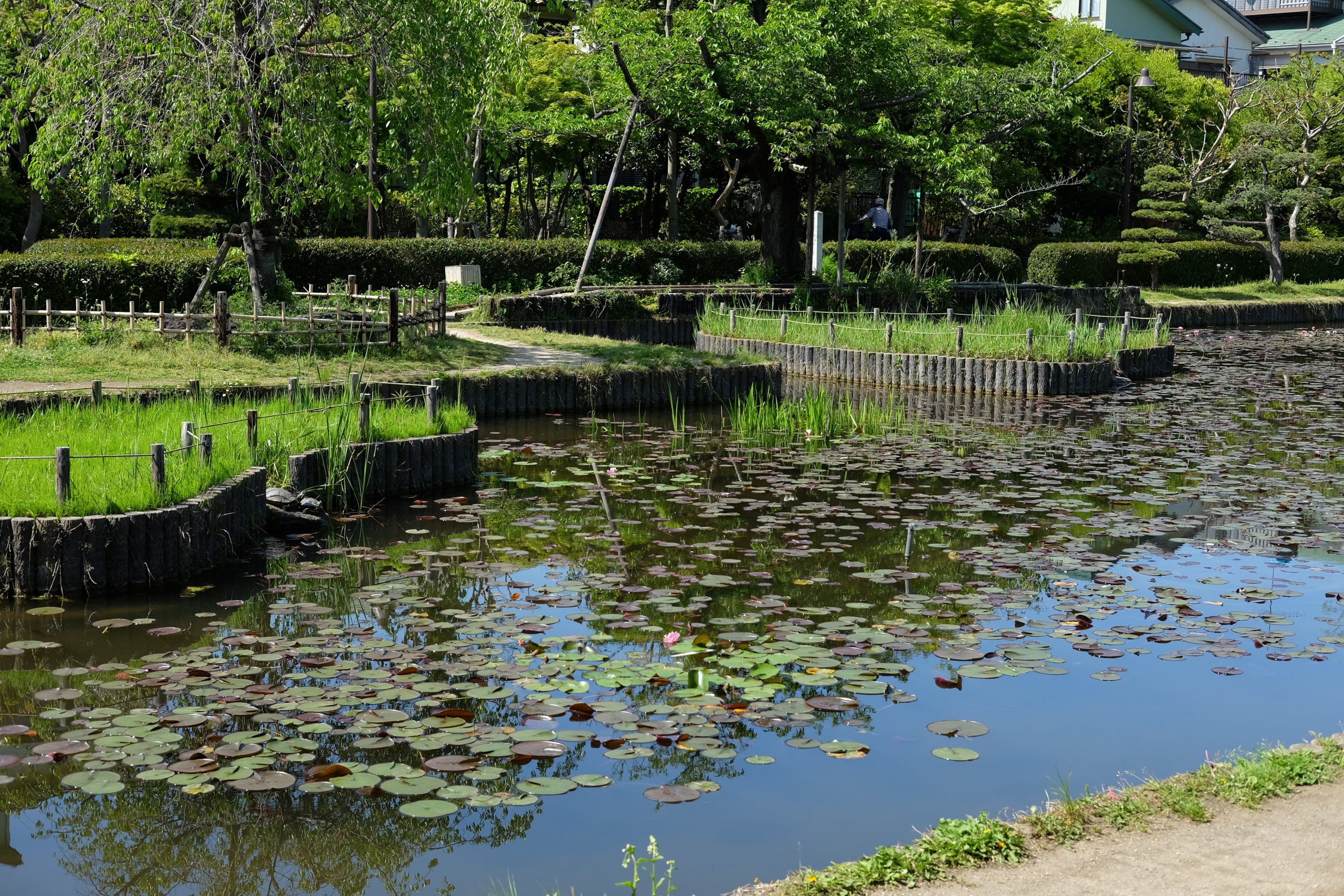
Kyoto Events in June
Taue-sai – If you find yourself in Kyoto on June 10th, don’t miss the Taue-sai Festival at the renowned Fushimi Inari Taisha Shrine. This isn’t your typical touristy event, it’s a heartfelt celebration dedicated to the art and tradition of rice farming.
Hydrangea Festival – When Kyoto’s rainy season hits, don’t let the grey skies keep you indoors. This is when hydrangeas burst into life, offering a vibrant splash of colour to the city’s landscape. You’ll see these blooms in various hues—purples, blues, pinks, and whites—that seem to pop even more against the overcast backdrop.
Cuisine Highlights
In June, the focus shifts to lighter fare. Somen noodles served cold with a dipping sauce make for a refreshing meal. Unagi, or freshwater eel, is also popular in June, as it’s believed to help combat the summer heat and humidity. Additionally, you can enjoy seasonal fruits like cherries and plums at their peak.
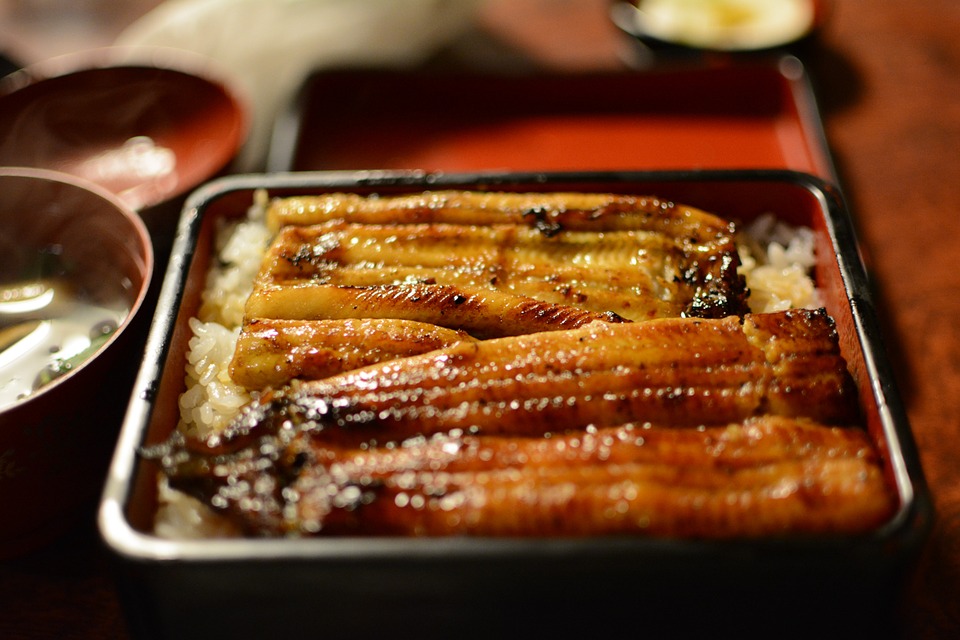
What to Wear in June
Pack light, but bring variety. Think shorts, breathable tops, and a couple of warmer items for cooler evenings, like a denim jacket. Good waterproof walking shoes that dry quickly are more practical than ever, and a lightweight rain jacket is essential.
Why Visit in June
The tourist crowds are thinner, giving you a better opportunity to connect with the culture and the people. Despite the rain, many of Kyoto’s temples and gardens look even more beautiful, and the misty landscapes can offer a surreal and magical backdrop for your photos. June’s softer light conditions are also ideal for photography. If you’re willing to embrace the rain, you’ll find a peaceful and romantic Kyoto waiting for you.
Visiting Kyoto in July
July in Kyoto marks the peak of the hot and humid summer season. Temperatures soar between 25-33°C (77-91°F), and the city comes alive with colourful festivals and events. Though tourists are fewer compared to the cherry blossom season, it’s far from dull.
Kyoto Weather in July
July can be sticky and humid, so it’s essential to stay hydrated. Typhoons are possible. Pack breathable, lightweight clothing, along with sunglasses and sunscreen. A portable fan can be a lifesaver. Drink plenty of liquid. Luckily, there are vending machines at every corner selling iced teas, iced coffee or water.
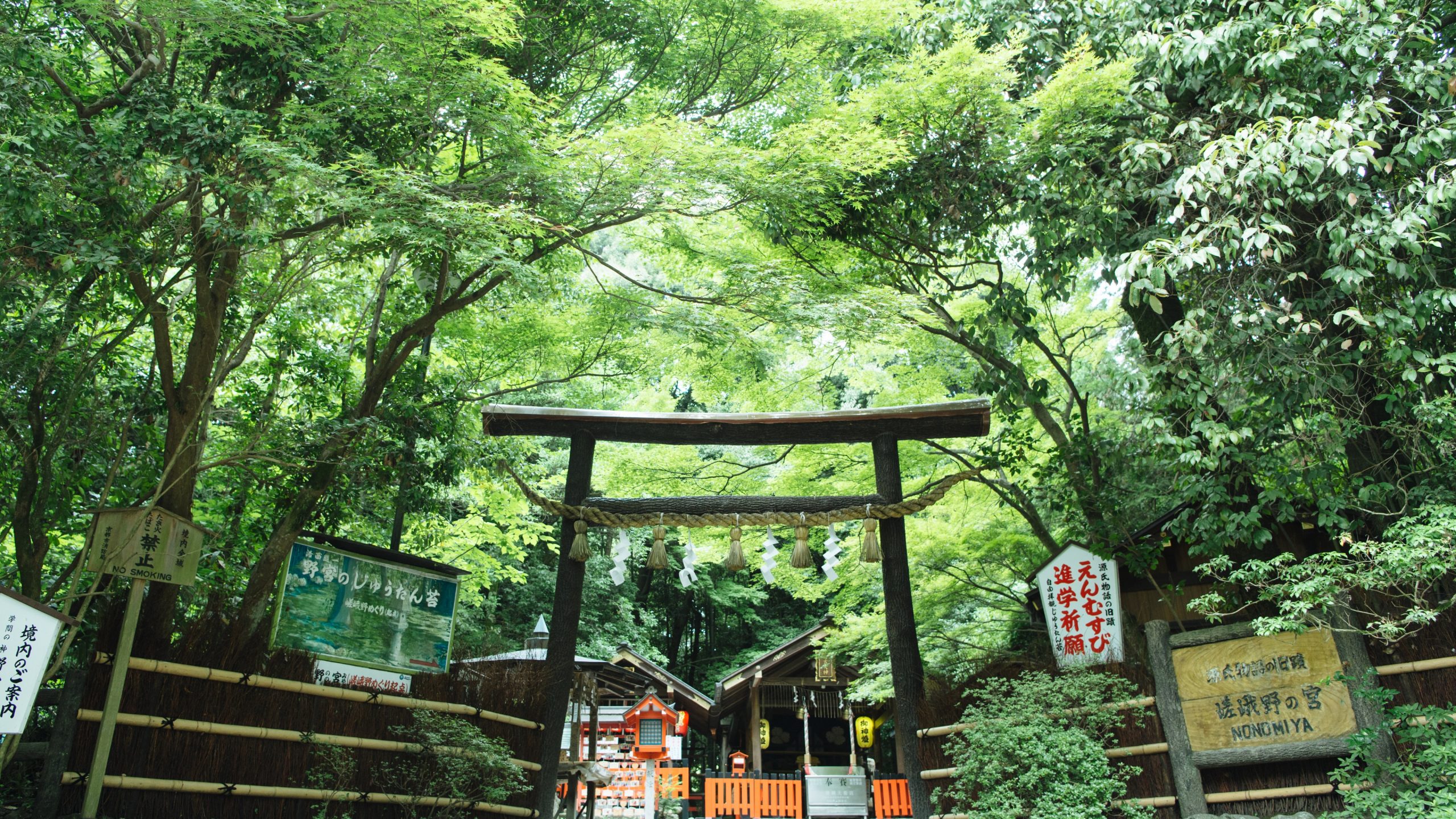
Kyoto Events in July
Gion Matsuri – One of Japan’s most famous festivals, the Gion Matsuri spans the entire month but peaks on July 17 with a grand procession of floats.
Mitarashi Festival – Held at Shimogamo Shrine, this festival lets you wade into a shallow stream to cleanse yourself and make wishes for good health.
Kamishichiken Beer Garden – A Unique Experience with Geiko and Maiko If you’re in Kyoto and looking for something a bit out of the ordinary, don’t miss the Kamishichiken Beer Garden. Located in the city’s oldest geisha district, this beer garden provides a rare and intimate experience: you get to sip cold beer and enjoy scrumptious local food in the company of Kyoto’s renowned geiko and maiko.
Cuisine Highlights
July is the time for summer foods like kakigori (shaved ice with flavoured syrup) and cold soba. You will want to indulge in all the matcha ice cream! Cold draft beer and light sake varieties are popular among locals to beat the heat. Also, try Ayu, a small river fish often grilled with salt, which is a summer delicacy.
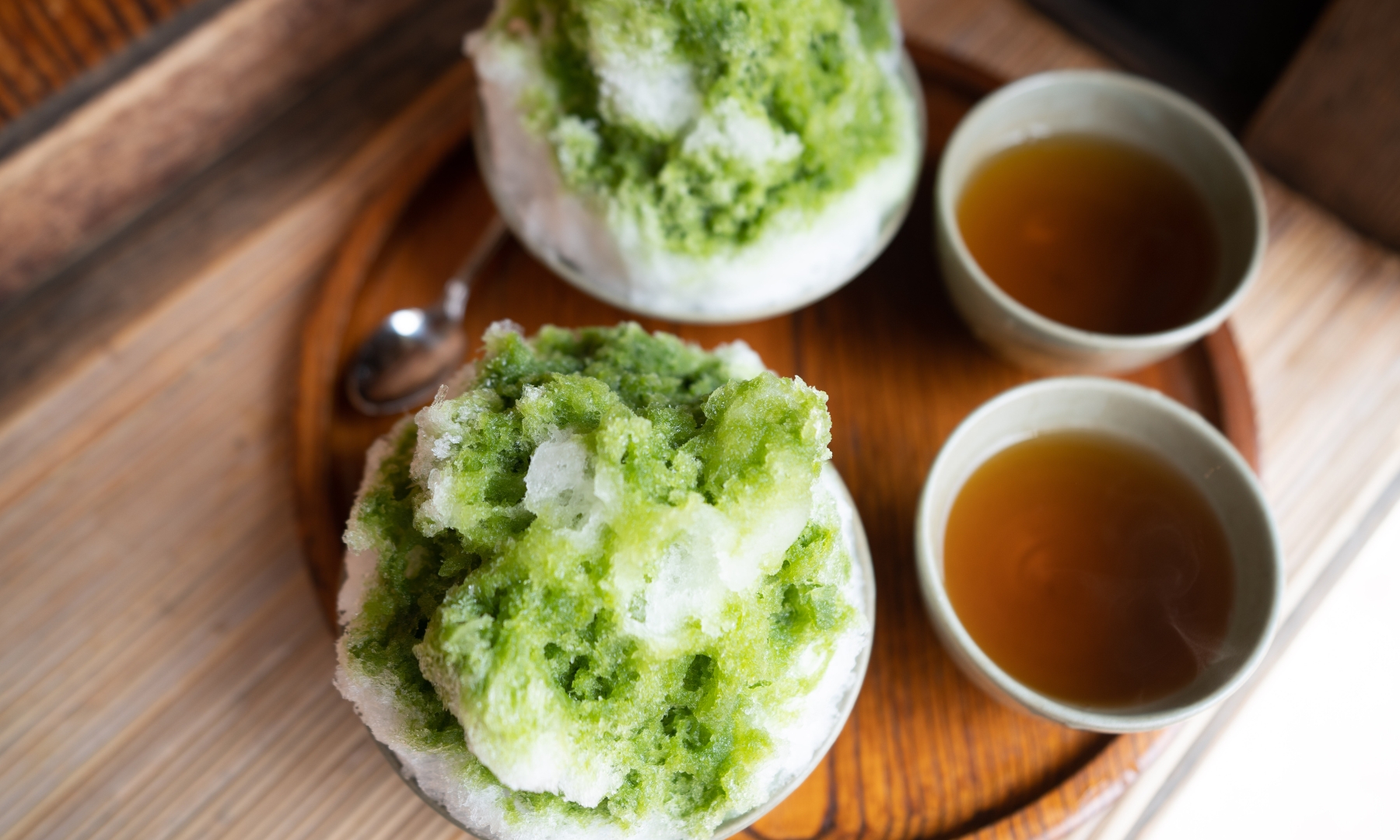
What to Wear in July
Comfort is king. Think loose-fitting clothing, shorts, tank tops, and breathable sneakers. Remember that sandals are not seen as often in Japan. If you want to wear sandals, ideally you will have a thin white sock with you for when you need to enter temples. Always carry a water bottle and consider wearing a hat or visor to protect yourself from the sun.
Why Visit in July
July is all about local festivals that allow you to dive deep into Kyoto’s rich culture. It’s the perfect month to explore the city in its vibrant glory, despite the heat and humidity. At night, the streets of Gion become more animated, and there are plenty of seasonal treats to cool you down. Plus, the evenings are warm, so you can comfortably enjoy nighttime walks and outdoor dining.
Visiting Kyoto in August
August in Kyoto is scorching, but it’s also filled with cultural richness that you won’t want to miss. Expect temperatures to hover between 26-34°C (79-93°F), so come prepared for some heat. Although the crowds might be lighter than other peak seasons, the city remains lively.
Kyoto Weather in August
Heat is the name of the game in August. While the rain eases up compared to the earlier summer months, the humidity sticks around. Keep a reusable water bottle on hand, and maybe even a hand towel to wipe away the sweat. Air-conditioned spaces will become your best friends, so plan indoor activities for the hottest parts of the day.
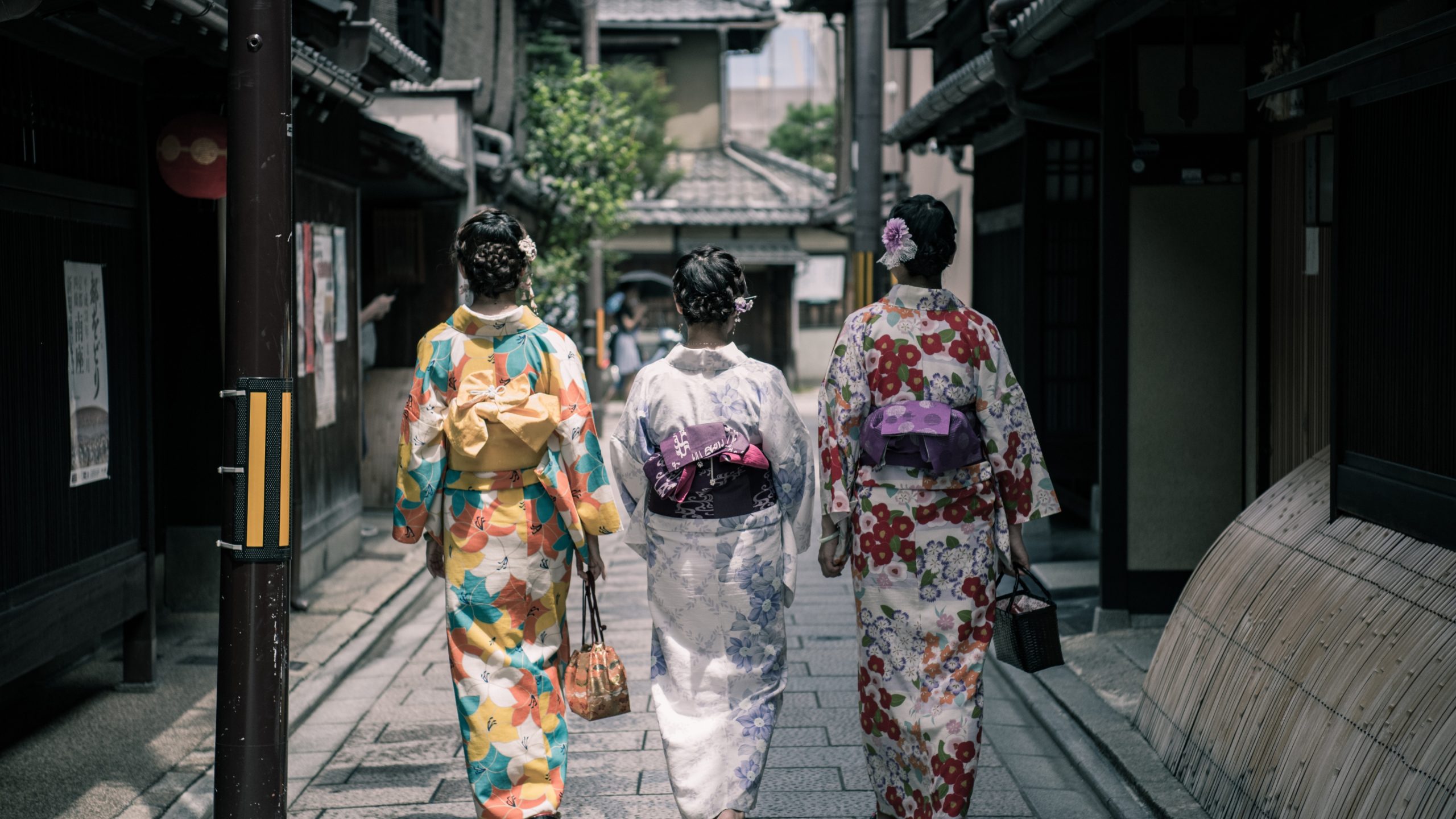
Kyoto Events in August
Daimonji Gozan Okuribi – On August 16, huge bonfires are lit on five mountains surrounding Kyoto, symbolizing the end of Obon, a Buddhist festival. It’s an extraordinary sight, and something you’ll only see here.
Obon Festival – Families come together to honour the spirits of their ancestors. Though not a public event, you’ll notice a more reflective mood around the city.
Cuisine Highlights
Summer in Kyoto means it’s time for somen noodles. These thin, cold noodles are perfect for the August heat. You should also sample Unagi, freshwater eel often grilled with a sweet and savoury sauce, which is a seasonal favourite said to help combat summer fatigue. Eat all the ice cream and enjoy those delicious iced coffees.
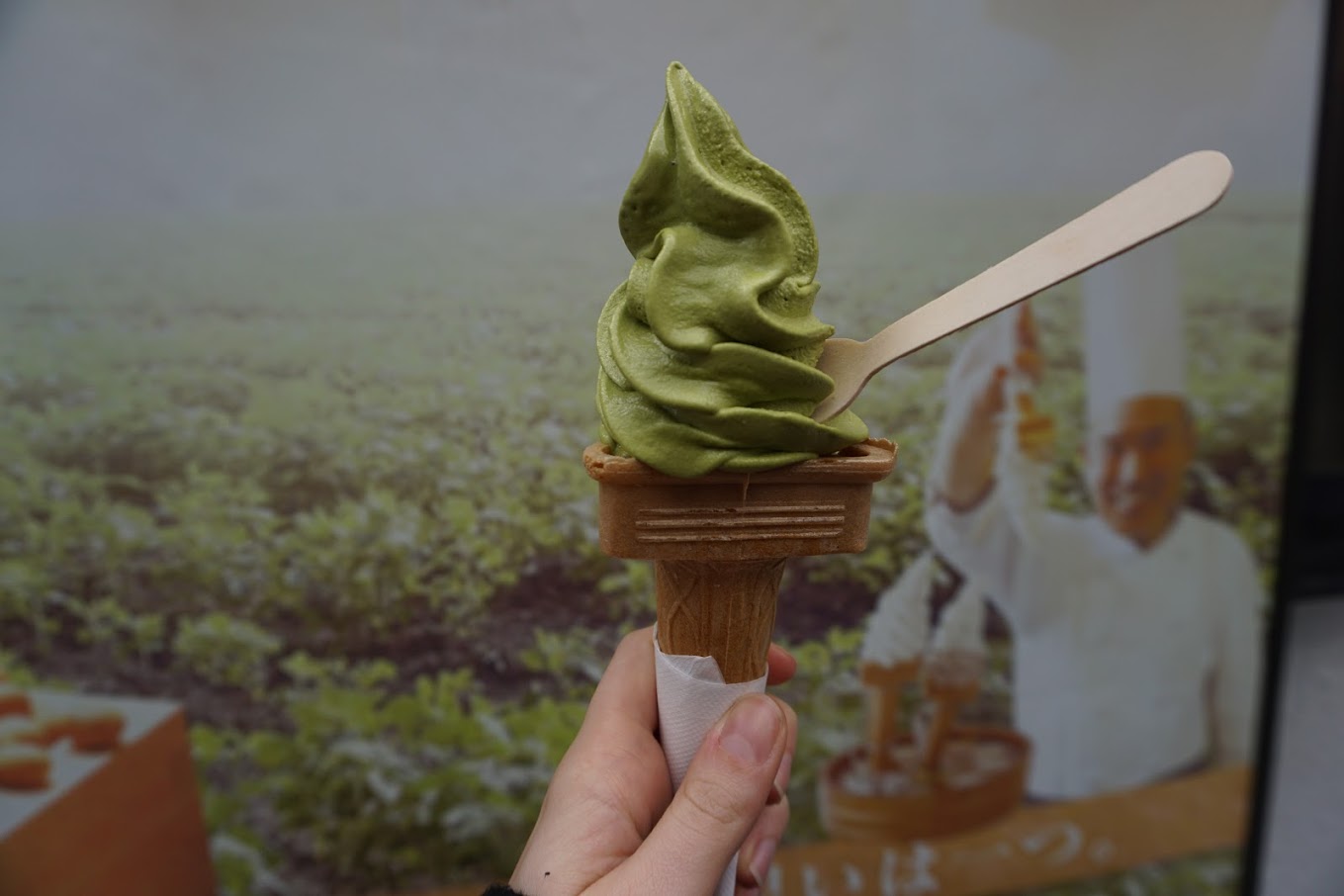
What to Wear in August
Breathable fabrics are key. Linen, cotton, and moisture-wicking materials will be your go-to. Sunscreen and a hat are non-negotiable, and a portable fan wouldn’t hurt. Choose shoes that allow your feet to breathe, airy sneakers are ideal.
Why Visit in August
Despite the heat, the unique matsuri make August a compelling time to visit Kyoto. For those who can handle high temperatures and humidity, August offers a less touristy and more authentic experience of Kyoto’s traditions. But I do need to warn you, temperatures can be a bit gruelling. A great way to escape the heat is to explore the mountains surrounding Kyoto. Just remember that typhoons are likely.
Visiting Kyoto in September
September in Kyoto signals the transition from summer to autumn, offering a blend of warm days and cooler nights. The temperature typically ranges between 21-29°C (70-84°F). While it’s still less crowded than peak cherry blossom and fall foliage seasons, it’s an underrated month to explore the city’s cultural and natural beauty. The only downside? Typhoons are still likely.
Kyoto Weather in September
September can be a mixed bag, weather-wise. You might still encounter some remnants of summer heat early in the month, but expect a gradual shift to cooler, more comfortable conditions. Rain showers are still possible, especially as the typhoon season lingers. Having a light, water-resistant jacket and an umbrella on hand would be a good idea.
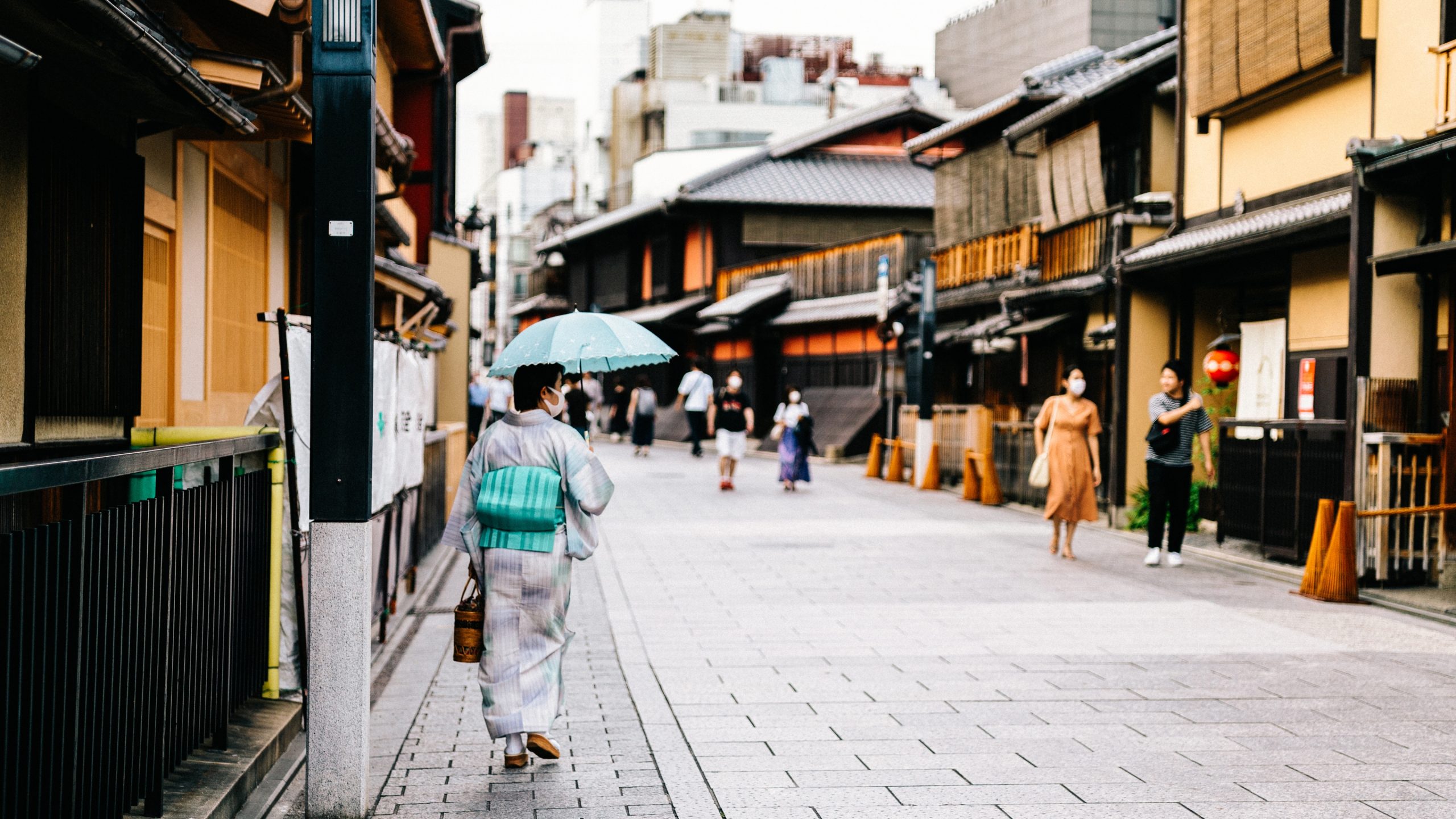
Kyoto Events in September
Kamigyō Takigi Nō – Experience the Kamigyō Takigi Nō at Shiramine Shrine for an unforgettable night of firelit Nō theater. Set in an open-air stage and lit solely by the glow of fire, this annual event is more than a performance.
Chuson-ji Lantern Festival – Around mid-September, Chuson-ji Temple comes alive in the evenings with hundreds of lanterns, providing an ethereal experience and incredible photo ops.
Kangetsu no Yūbe – Moon viewing, or Tsukimi, is a cherished tradition in Japan, often accompanied by poetry, music, and seasonal foods. Daikaku-ji Temple is among the most popular hosts for this kind of evening.
Cuisine Highlights
As the season shifts, so does the local cuisine. September is a good time to try Sanma (Pacific Saury), a fall fish that’s usually grilled. For a unique Kyoto food experience, opt for seasonal Kaiseki, a traditional multi-course meal that reflects the flavours and ingredients of early autumn.
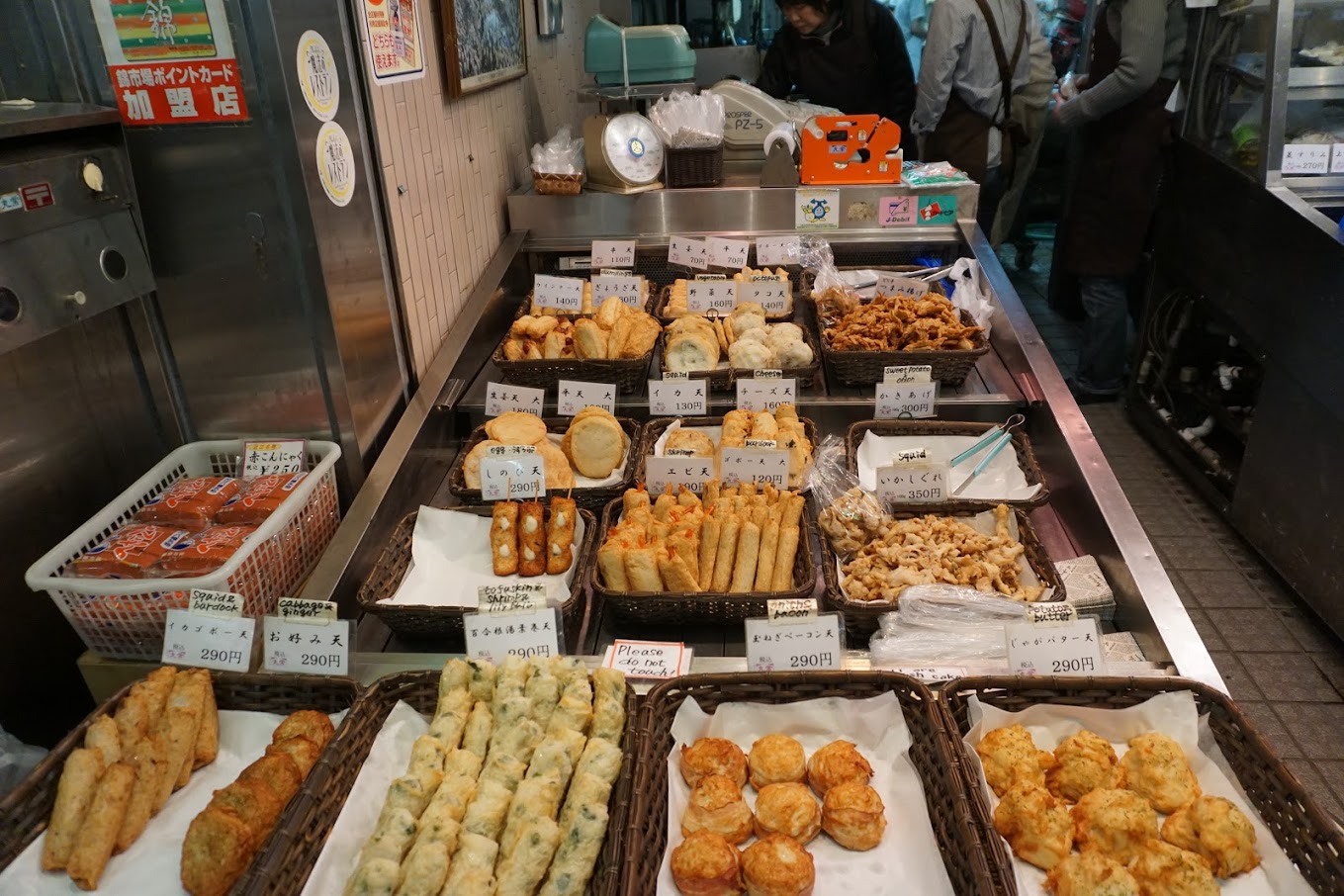
What to Wear in September
Layers are your friend in September. Think light sweaters or long-sleeve tops that can be easily added or removed. Comfortable walking shoes are a must, and perhaps pack a light scarf for chillier evenings. Mid September is still hot but towards the end of the month you will want a cami and a white long sleeve linen shirt for sure.
Why Visit in September
If you’re the type who likes to avoid extreme weather and heavy crowds, September is a sweet spot. Ideally, you will aim for the end of September, though, as that’s when the temperatures start to be more pleasant. The city isn’t as packed, and the weather is generally nice, making it easier to explore outdoor sites like Fushimi Inari or Arashiyama Bamboo Grove. With students going back to school, the vibe is a bit more laid-back but still buzzing with cultural happenings.
Visiting Kyoto in October
October in Kyoto is an absolute gem of a month. The temperatures range from 15-23°C (59-73°F), striking that perfect balance between not too hot and not too cold. This is the month where the city starts slowly wearing its magnificent autumn colours. Just remember to check the koyo calendar to ensure you visit at the right time.
Kyoto Weather in October
You’re in for crisp mornings and comfortably warm afternoons. Although rain isn’t frequent, it’s always wise to keep a compact umbrella in your bag. The air is noticeably drier compared to the summer months, which makes walking around the city a delightful experience.
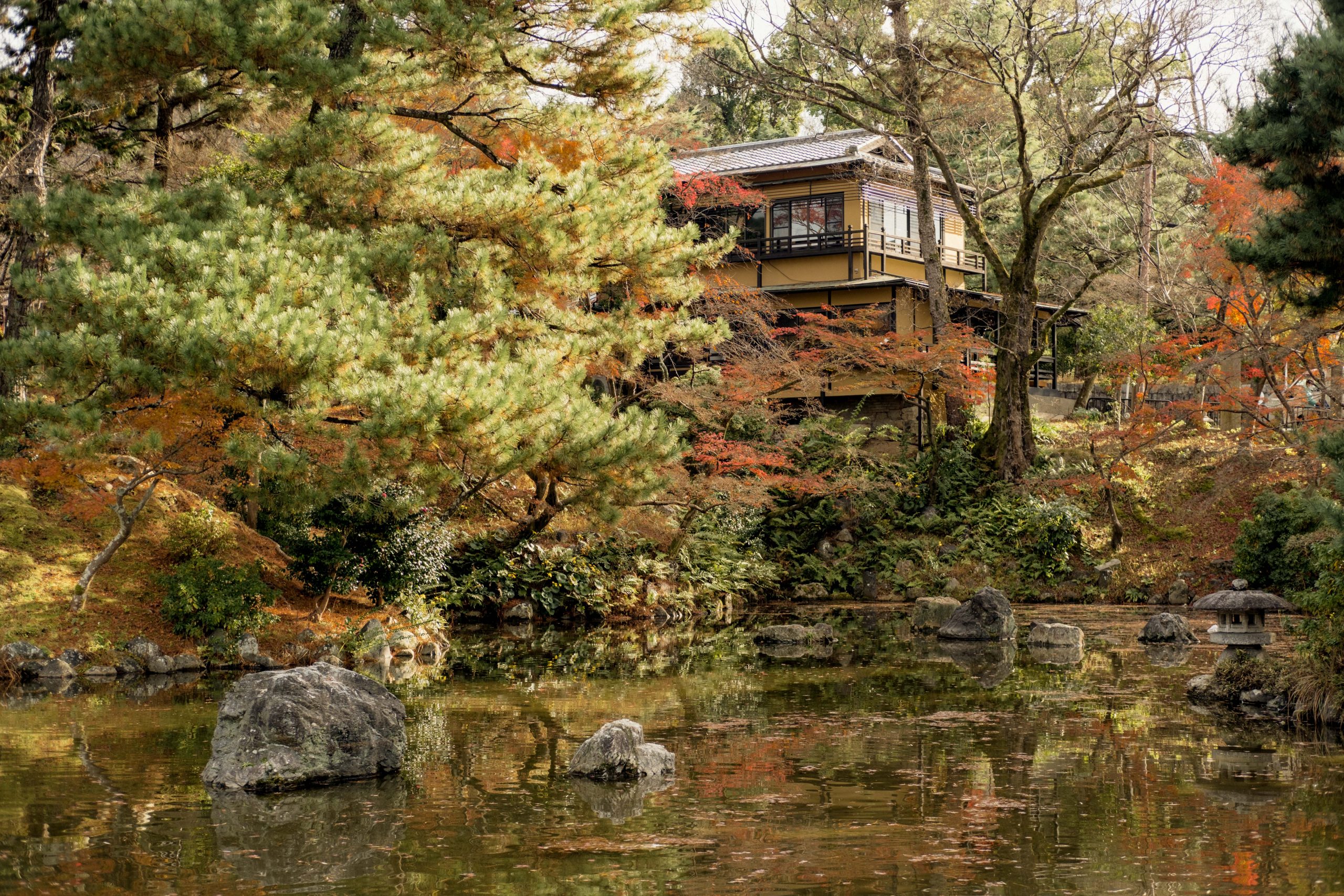
Kyoto Events in October
Jidai Matsuri (Festival of the Ages) – Usually held on October 22nd, this festival is a parade showcasing various historical periods of Japan. Costumes, music, and cultural demonstrations make it a must-see.
Kurama Fire Festival – Taking place in the village of Kurama north of Kyoto, this festival involves locals carrying large torches to light the path for ancestral spirits. It’s a spectacle and a half!
Kiyomizuyaki no Sato Matsuri – A grand ceramics fair that features not only local artisans but also creators from across Japan, putting a spotlight on the renowned Kyoto ceramics called Kyō-yaki/Kiyomizu-yaki.
Cuisine Highlights
October is chestnut season (kuri)! Whether it’s chestnut rice, chestnut desserts, or even chestnut lattes, now’s the time to try these autumnal treats. You will want to try mont blanc which is a dessert made with chestnut cream piped over a sponge cake. You should also look out for Matsutake mushrooms, a luxury item in Japanese cuisine, often served in soups or with rice.
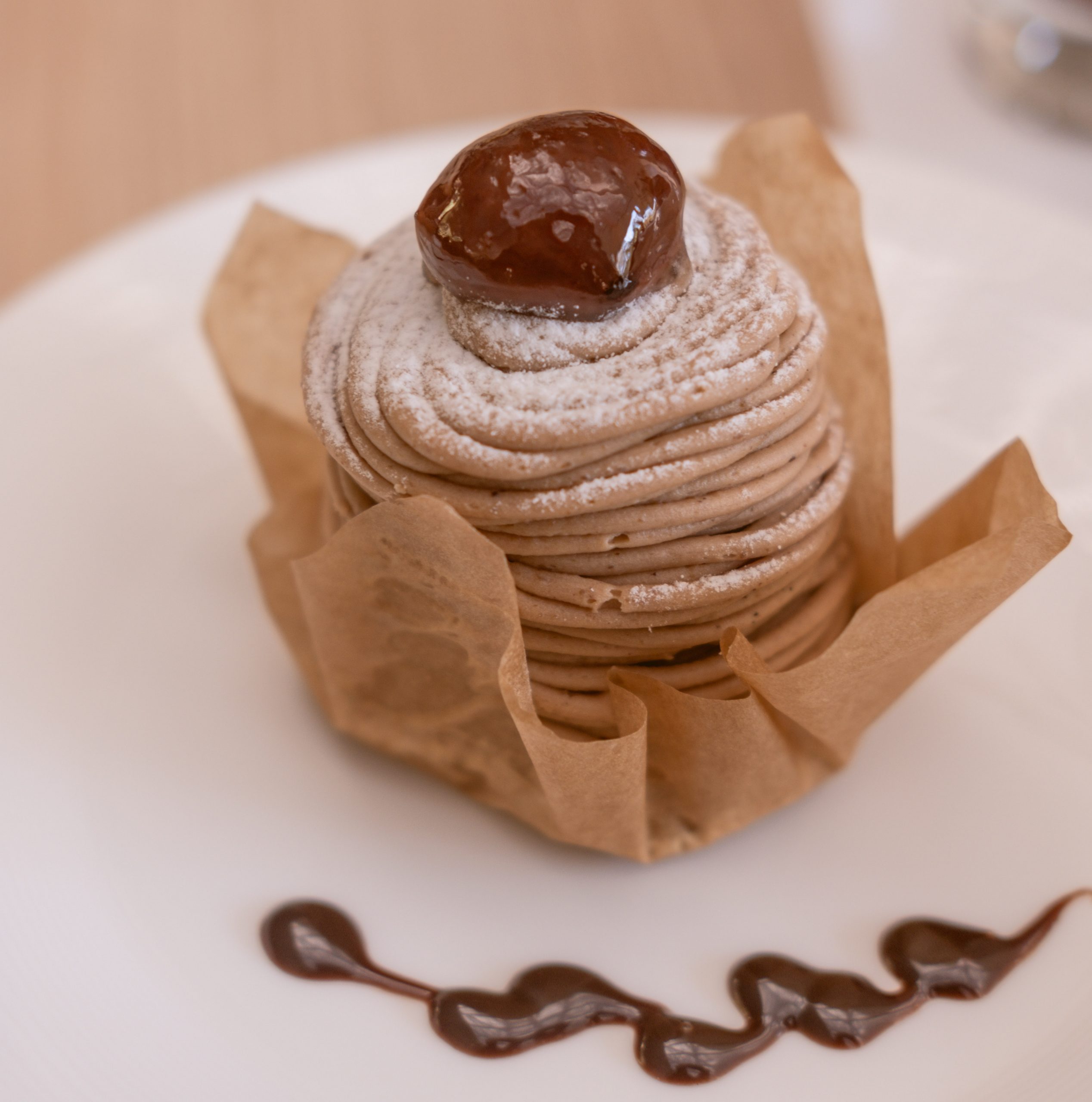
What to Wear in October
A light jacket or a warm cardigan will be your best companion for the fluctuating temperatures. Since you’ll likely spend a lot of time outdoors enjoying the fall foliage, a good pair of walking shoes is essential.
Why Visit in October
If you’re a fan of the outdoors, Japanese culture, or just great weather, October has your name written all over it. It’s the season where Kyoto’s natural beauty is on its way to becoming most striking, and the mild weather makes exploring much more enjoyable. Whether you’re into photography, history, or food, October is awesome. Also, my tip is to explore all the street food stalls. The weather is just perfect for it.
Visiting Kyoto in November
November in Kyoto is the epitome of autumn magic (and before you ask, my favourite time to be in Kyoto, which is why I almost always make sure to visit in November). The temperatures hover between 8-17°C (46-63°F), making it chilly but not too cold. This is prime time for koyo, the season of fall foliage. Expect vibrant reds, yellows, and oranges blanketing the city’s temples and gardens, transforming them into otherworldly settings. You check out our koyo forecast, lovely put together by my husband.
Kyoto Weather in November
Expect colder mornings and evenings, but the daytime can be surprisingly mild. It’s the sort of weather that will have you sipping on a hot tea one moment and then peeling off layers the next. Minimal rainfall makes for excellent walking tours, so you won’t have to worry about dodging puddles.
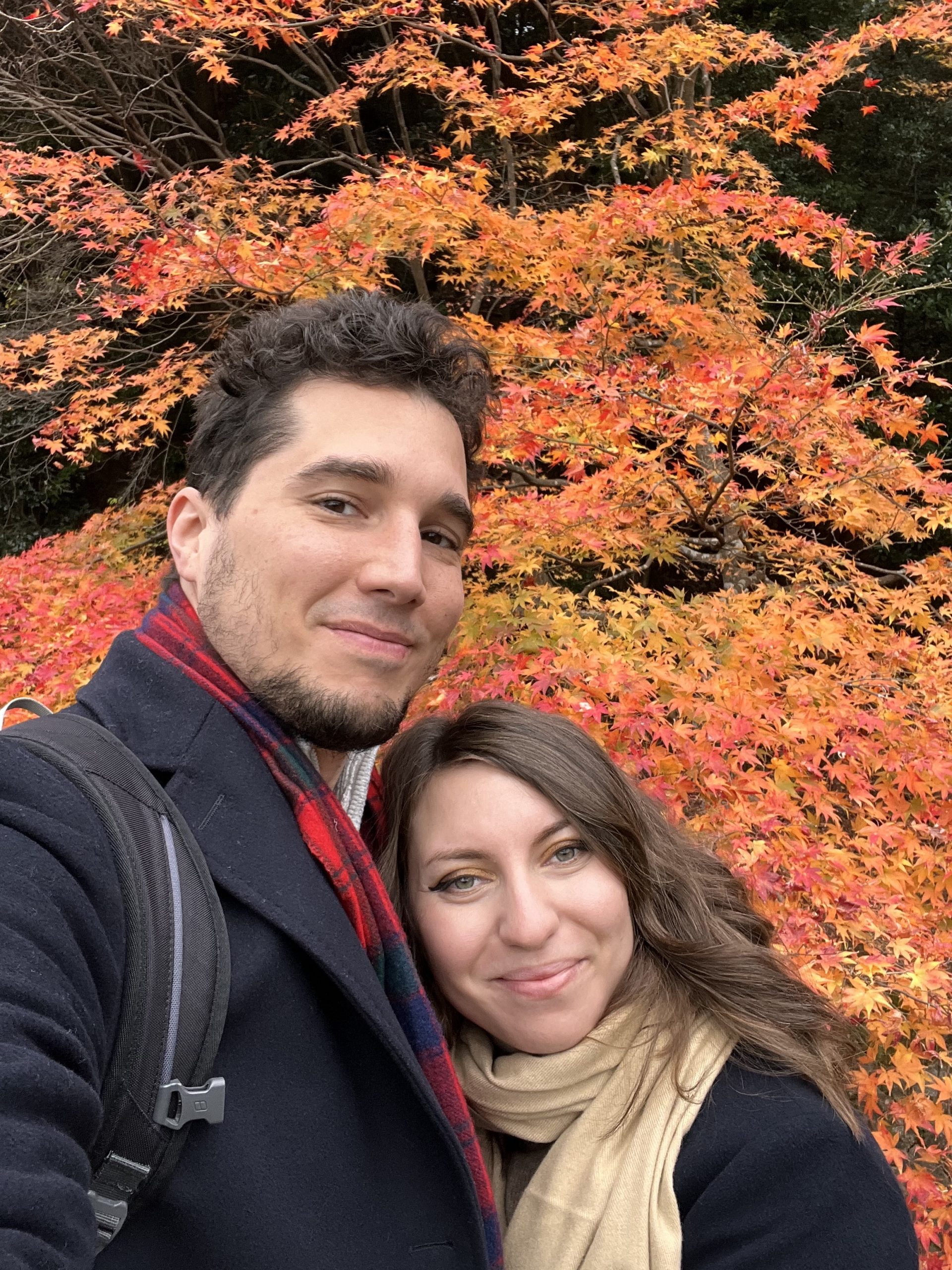
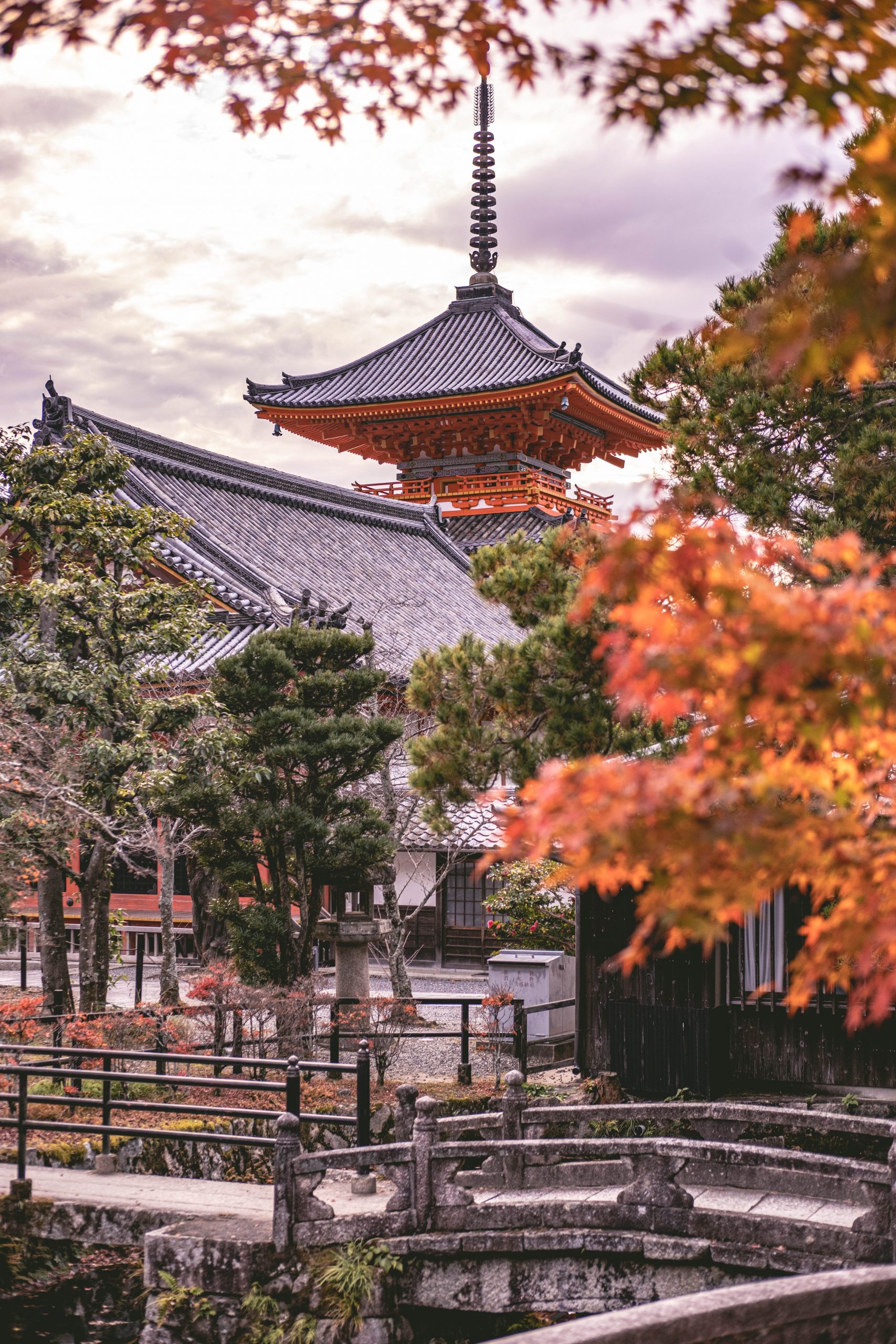
Kyoto Events in November
Arashiyama Momiji Festival – Usually on the second Sunday of November, this festival features boat parades on the Hozugawa River. Performers dressed in Heian Period costumes enact scenes from classical Japanese tales.
Shichi-Go-San – Held on November 15, this is a day where children aged three, five, and seven visit shrines to pray for health and prosperity. Cute kimonos, lots of smiles, and traditional Chitose-ame candies make this a charming family event.
Aki Matsuri – Tanukidani-san Fudō-in Temple’s Fall Festival, known as Aki Matsuri, takes place in early November and is steeped in ancient practices. Visitors write their heartfelt wishes on wooden tablets. Monks, who follow the spiritual discipline of Shugendō, then toss these tablets into a sacred bonfire.
Kyokusui no Utage – Kyokusui no Utage is a refined and artistic event reenacted twice a year at Jōnangū Shrine in southern Kyoto. Originating as a form of leisure for ancient Japanese nobility, this unique celebration showcases traditional customs and culture during both the spring and autumn seasons.
Cuisine Highlights
Persimmons are the fruit of the season, and you’ll find them in everything from salads to desserts. Also, as the weather cools, dishes like hot pots and grilled fish take centre stage. Try Kyoto’s traditional obanzai cuisine, a style of home cooking that features seasonal ingredients in simple but flavourful preparations. My favourite is still trying all the chestnut dishes.
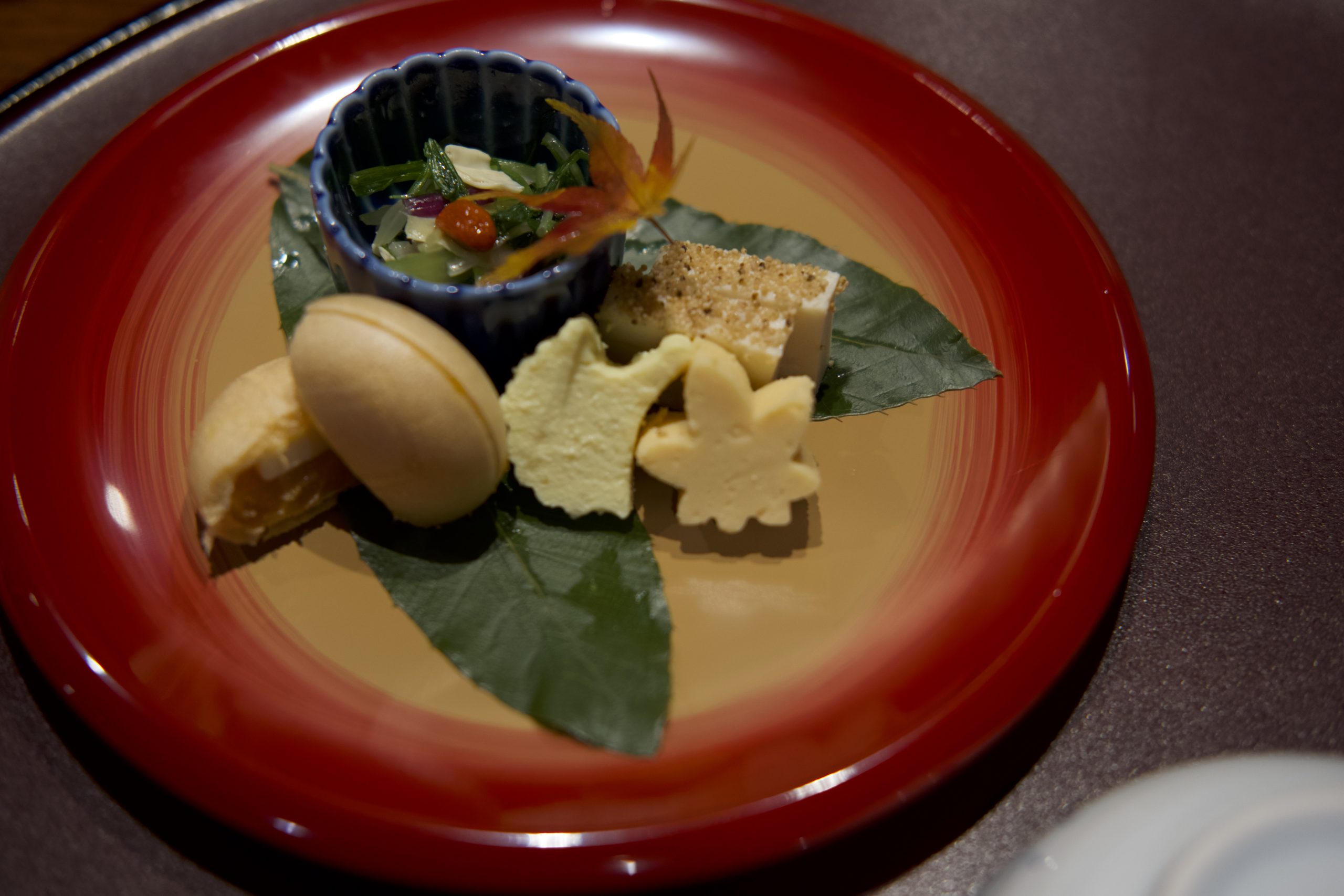
What to Wear in November
A versatile jacket that can handle both the crisp mornings and milder afternoons is a must. You’ll also want a comfy scarf for the evening. A sturdy yet comfortable pair of walking shoes is a good idea, especially if you plan on visiting the city’s many outdoor sites. At the beginning of November you will get warmer weather, where you can easily pull it off with just a tshirt and a jacket. Towards the end of November, though, you will need some serious layers. Thermal, a sweater and a wool coat.
Why Visit in November
For the foliage alone, November is worth the trip. When I say it’s beautiful, it’s seriously divine. I visited Kyoto for the foliage (again) last year and honestly, the temples look out of a postcard, they are so beautiful. It’s also the time when traditional cultural events are in full swing, giving you a chance to dive deep into Kyoto’s heritage. The food is hearty, the scenery is breathtaking, and the culture is rich. If you’re keen on capturing that perfect mix of nature and tradition in your photos, November is the month to be in Kyoto.
Visiting Kyoto in December
December in Kyoto brings a poetic calm, blending the last traces of autumn with the emerging chill of winter. The temperature ranges between 3-12°C (37-54°F), making it one of the colder months, but still quite manageable if you dress appropriately. And the best part? There are winter lights in almost all gardens, making Kyoto look out of a fairy tale. Make sure not to miss the evening lights at Arashiyama Bamboo Forest in December!
Kyoto Weather in December
Cold is the word, but snow is still rare. Mornings can be particularly chilly, but clear skies are more common, making outdoor activities quite pleasant as long as you’re bundled up. An umbrella might come in handy for the occasional sprinkle, but overall, precipitation is pretty low.
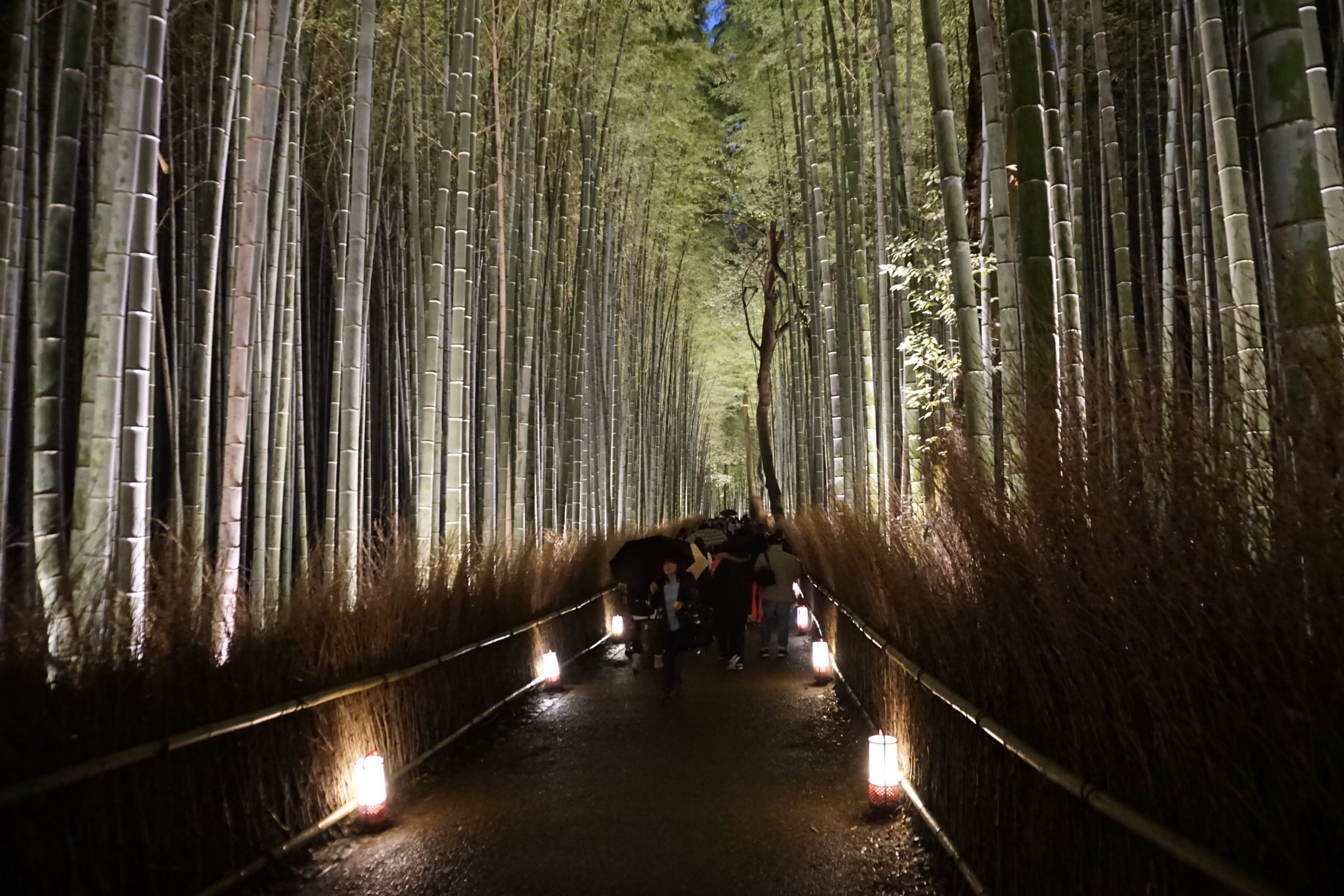
Kyoto Events in December
Hanatouro – In mid-December, the Arashiyama area illuminates its streets, temples, and the iconic Togetsukyo Bridge. Paper lanterns line the pathways and bamboo groves, creating an enchanting atmosphere.
Kyō-ryōri Exhibition – Calling all foodies for this one. The Kyoto International Exhibition Hall Miyakomesse is the place to be on December 13th and 14th for the annual Kyō-ryōri exhibition. This event is a food lover’s paradise, featuring a selection of lavish dishes from some of the city’s top restaurants.
Cuisine Highlights
December is a great time to enjoy seasonal dishes like yudofu, a hot tofu stew, perfect for warming you up. Another local favourite is kabocha, a Japanese pumpkin often used in tempura or simmered dishes. For seafood lovers, buri, or yellowtail, is the catch of the season, often served grilled or in hot pots. And same as January and February, fugu is fresh on the menu.
What to Wear in December
Warmth is your main priority. Pack a down jacket, thermal layers, a scarf, gloves, and a hat. Footwear should be water-resistant with a solid grip for those frosty mornings. In addition, thermal socks will be a lifesaver, especially if you’re exploring outdoors for extended periods. Don’t forget to buy heat patches from konbini and local shops in Kyoto.
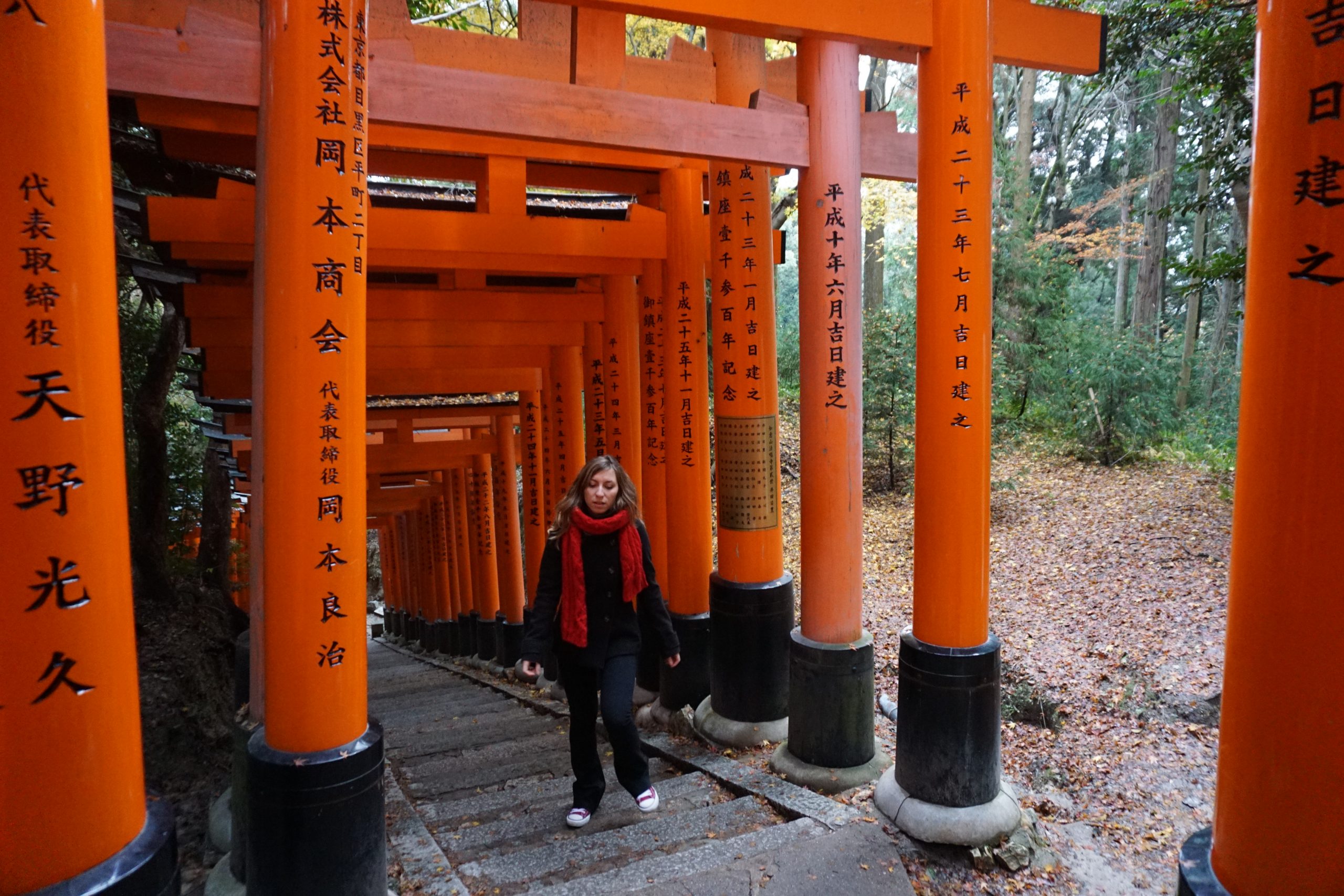
Why Visit in December
December in Kyoto offers a peaceful and romantic atmosphere that you won’t find in the busier months. It’s an opportunity to see a quieter side of the city, with fewer crowds and plenty of opportunities for introspective moments. In Kyoto, Christmas is generally not a public holiday, so most businesses remain open as usual. However, New Year’s is a significant holiday in Japan, and many businesses in Kyoto do close for several days around the New Year period. This includes some restaurants, shops, and other establishments. It’s common for businesses to close from December 31st to January 3rd, although some may close for a shorter or longer period.
Final Thoughts
I’m sure you can see that Kyoto truly is wonderful to visit year round but April and November are particularly wonderful months to visit Kyoto. If you wish to visit for the cherry blossoms, then the beginning of April is the best time for you. If you love hot weather and want to enjoy the summer holidays abroad, then July in Kyoto is your month. For pleasant weather and stunning foliage, November is your best month. Finally, for winter illumination, visit in December.
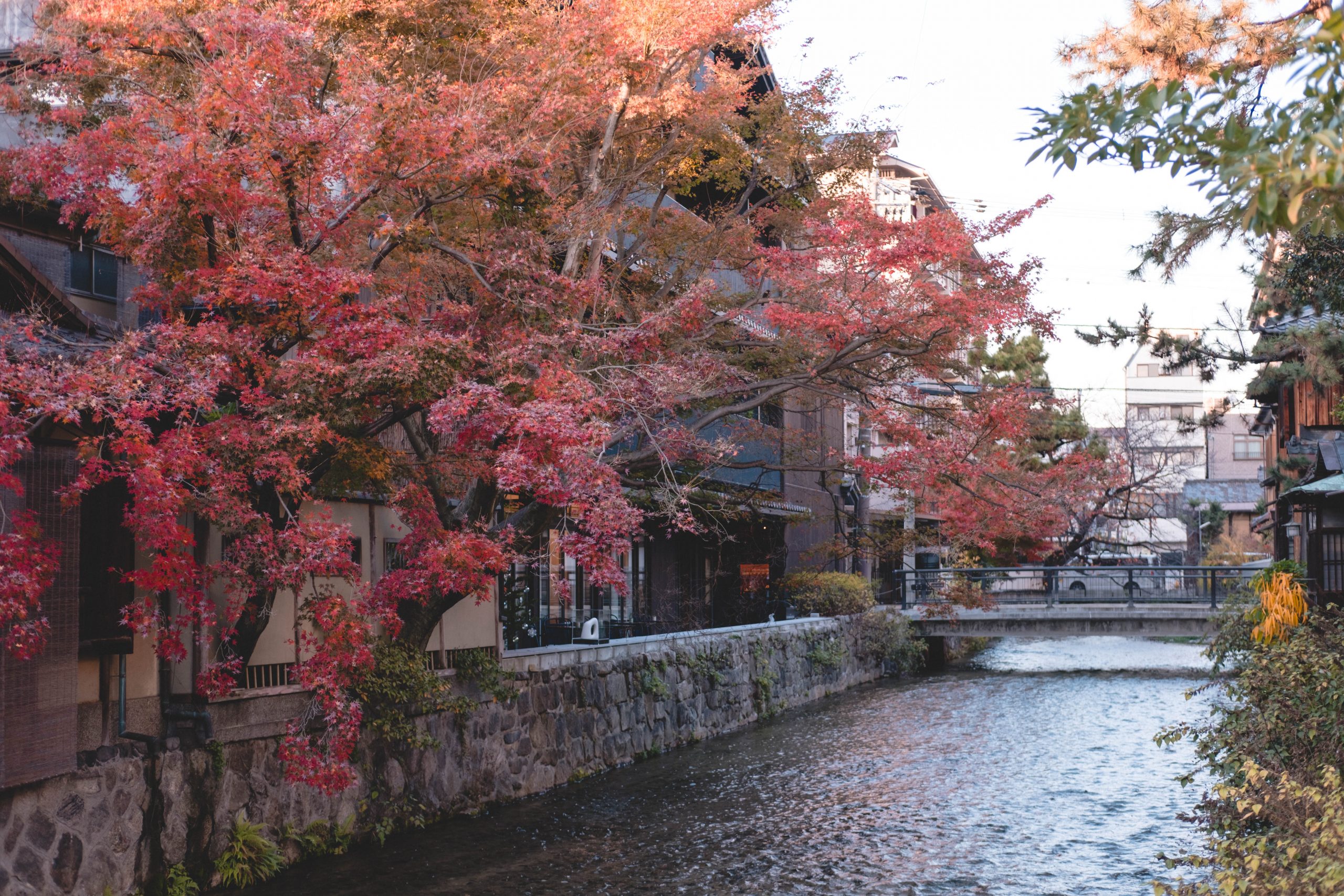
Tips for first time Kyoto visitors
- Book your accommodation well in advance. Make sure to check Where to stay in Kyoto for first timers to find the best location for your needs.
- Check out our complete 2 days in Kyoto itinerary as well as the 5 day Kyoto itinerary if you want a longer stay.
- Check out the differences between Kyoto and Osaka.
- See the best Kyoto temples and shrines and add them to your list.
- Stay connected with a pocket Wi-Fi device or prepaid SIM card. Renting or buying in advance will help you use navigation apps, translators, and do some extra research on the go. You can pick up the device at the airport, or have it delivered to your hotel reception.
- While Japan’s public system can be overwhelming, using Google maps makes it super easy to get around. I do recommend renting a car in Okinawa to get around with ease.
- While cards are widely accepted, many small establishments still prefer cash, particularly in older neighbourhoods. Major banks in Japan now accept international cards for cash withdrawals. Don’t forget to check how expensive is Japan to know what to expect.
- Be aware of Japanese customs and manners, such as removing your shoes before entering someone’s home, bowing as a form of greeting, and not tipping at restaurants.
- Knowing a few simple Japanese phrases can go a long way. For those serious about learning Japanese, check out Japanese with Aimee and use the code YCTRAVEL to get a 10% discount on the course.
- For those on a budget, visit Japanese convenience stores, or “konbini,” for snacks, drinks, and meals at affordable prices. You can also grab a quick drink or bite from a vending machine.
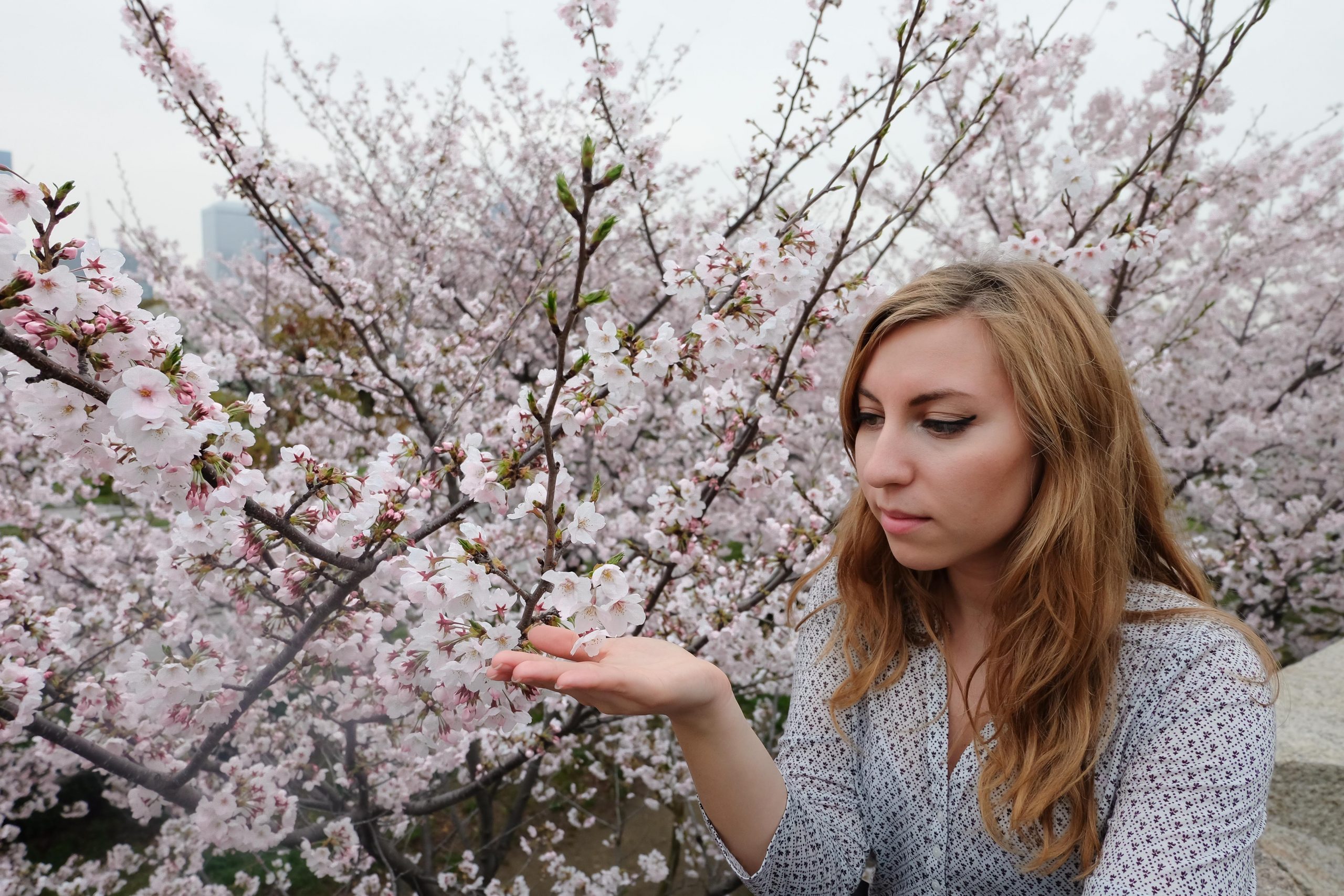
Useful resources for first timers
- When planning your first trip to Japan, make sure to check the dos and don’ts.
- Learn what to pack for Japan to ensure you have the perfect wardrobe for every season.
- When planning your first trip to Japan consider the best time to visit Japan. Keep in mind that cherry blossom season is a lot busier and more expensive.
- Booking your activities in advance is highly recommended to avoid queuing and ensure availability, especially for popular attractions.
- While Japanese food is excellent everywhere, a food tour can take you to lesser-known gems and off the beaten path izakayas for a unique culinary experience.
- If you plan to stay longer in Japan, check out our Japan itineraries with details on where to go and how to plan the perfect trip. For this, invest in a JR Pass to save money on JR trains.
- Customs and manners in Japan can be unique, so make sure to familiarize yourself with our Japanese customs and manners book. It contains fun Japanese illustrations and crucial information on how to behave in various scenarios when visiting Japan.
- Should you decide to visit other parts of Japan, make sure to check where to stay in Tokyo, and where to stay in Osaka. I also have tailored Tokyo itineraries and a lot more information on my complete Japan guide, which is available free of charge to all my readers.
Frequently Asked Questions
How many days do you need in Kyoto?
The number of days you’ll need in Kyoto can vary based on what you want to see and do, but generally, 3 to 5 days is a good range for most travellers. With three days, you can cover the major attractions like Fushimi Inari Shrine, Kinkaku-ji (Golden Pavilion), and Arashiyama Bamboo Grove. If you have five days in Kyoto, you can explore the city more deeply, perhaps venturing into lesser-known neighbourhoods or spending more time in the city’s beautiful gardens and temples. The extra time also allows for a more relaxed pace and the opportunity to try out more local cuisines or partake in cultural experiences like tea ceremonies.
Is Kyoto better in spring or fall?
If you like seeing cherry blossoms, go to Kyoto in the spring. It’s a big deal there, and the whole city looks pretty with pink and white flowers. But it’s also really busy, so prepare for crowds. It’s also the most expensive time to visit Japan.
If you prefer the colours of fall leaves, then go in the autumn. The city has a lot of red, orange, and yellow leaves that make everything look nice. It’s also less crowded compared to the spring. Prices are more decent too, so if you are on a budget, autumn is also better than spring in Kyoto.
Both times of the year have good weather and special foods to try. Spring has cherry blossom treats, and in fall, you can find food with chestnuts and mushrooms. So it’s really about what you want to see and do, how much you mind crowds and your budget. I, personally, prefer autumn because, in my opinion, the weather is better and Kyoto looks so much prettier.
What is the best month to go to Japan?
The best month to go to Japan really depends on what you want to see. If you’re a fan of fall foliage, then November is a fantastic time to visit. The trees are bursting with reds, oranges, and yellows, especially in places like Kyoto. It’s not as crowded as cherry blossom season, and the weather is usually mild, making it great for walking around and exploring. Plus, seasonal foods featuring things like chestnuts and mushrooms are on offer. So, for leaf-peeping and comfortable weather, November is your best bet.
Do you need more time in Tokyo or Kyoto?
You’ll probably want to spend more time in Tokyo if you’re looking to get a mix of modern and traditional experiences. Tokyo is a massive city with endless options—shopping districts, eclectic neighbourhoods, a wide range of museums, and tons of restaurants and bars. Each district feels like its own little world, so you’ll need more days to really get a taste of what the city has to offer. Kyoto, on the other hand, is more compact, and you can experience its historical and natural sights in a shorter span of time. So, for sheer variety and size, Tokyo requires a longer stay.


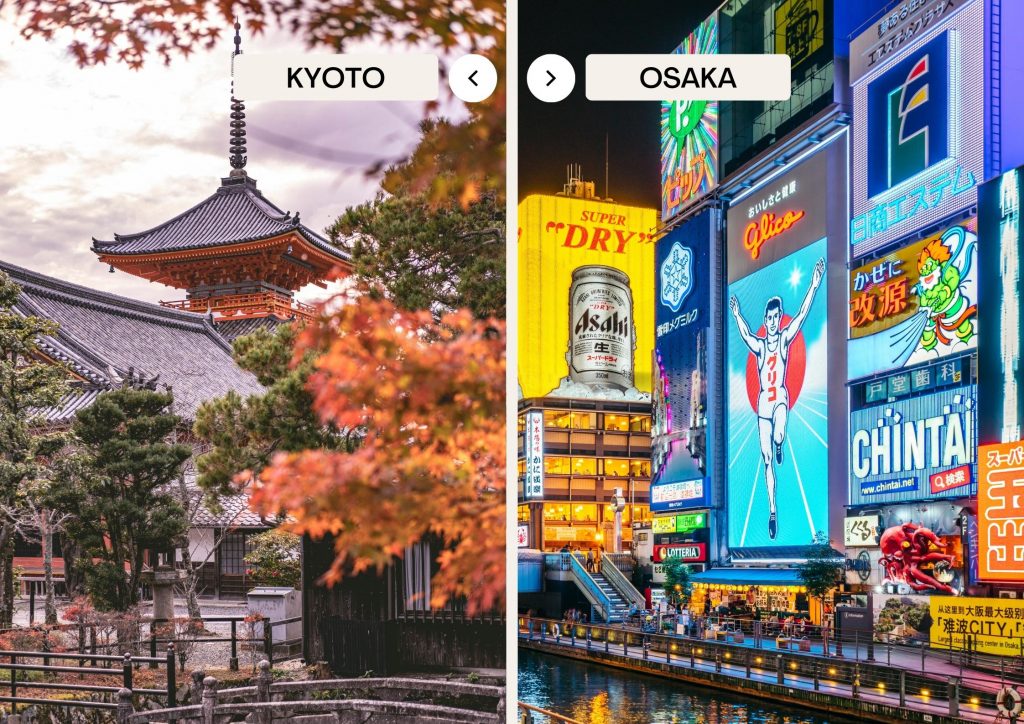
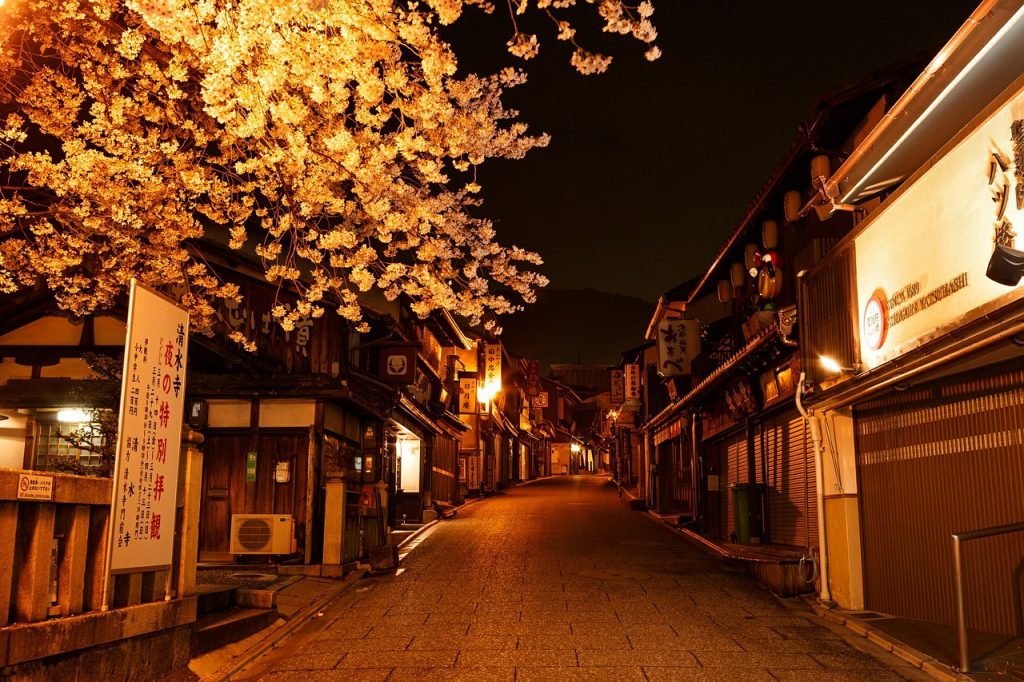
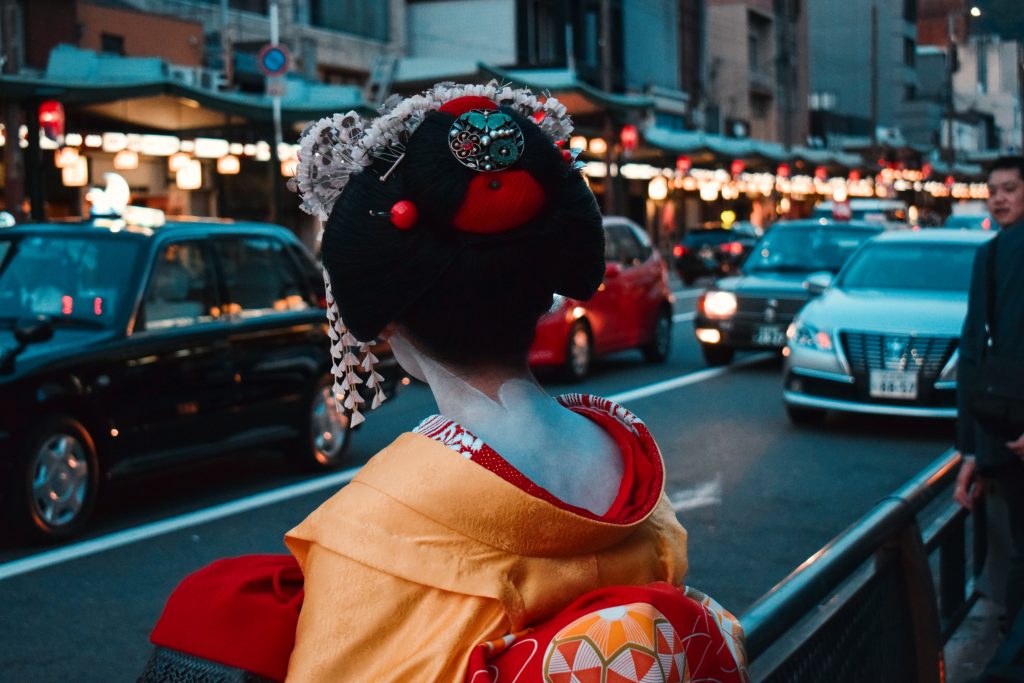
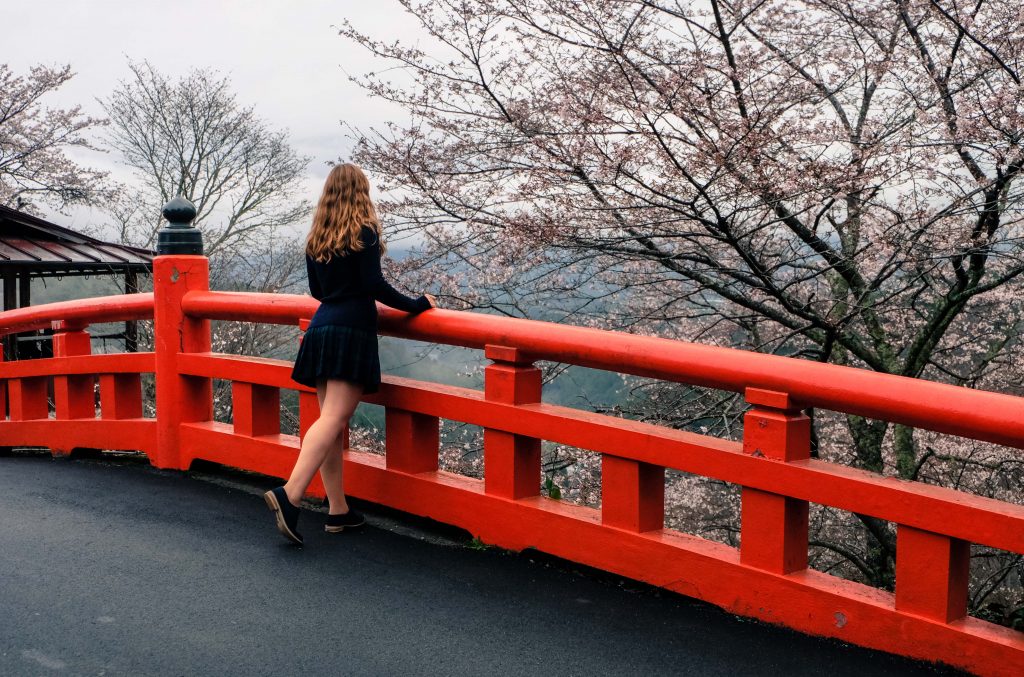
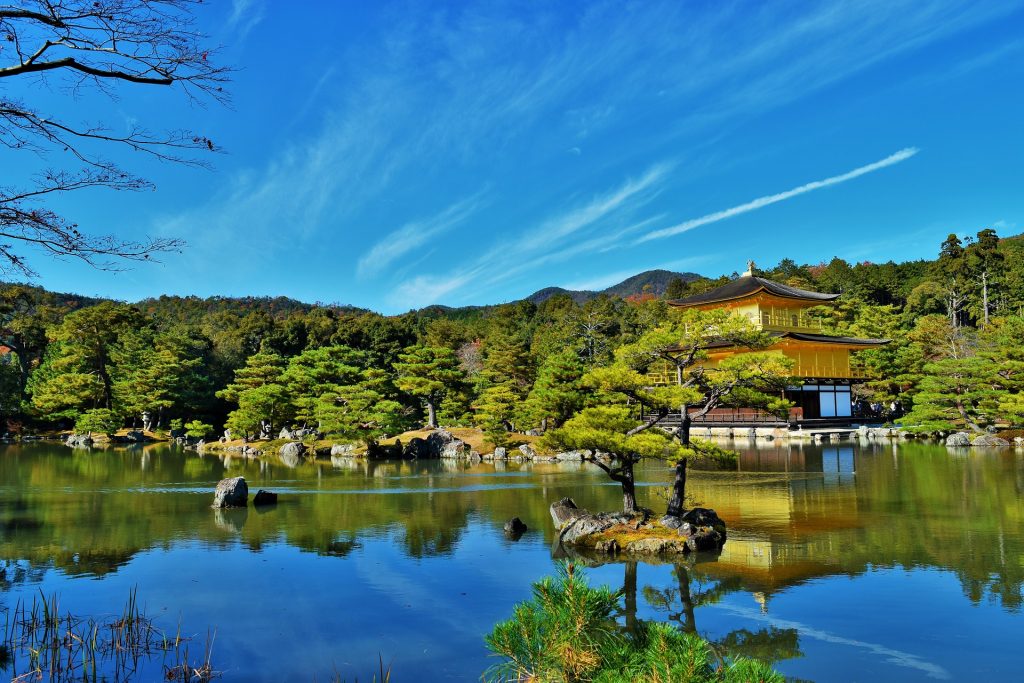


Leave a Reply